Publications & Research
You will find below a curated selection of research and publications related to suicide, suicide prevention and COVID-19. View the IASP Newsletter for further research and publication news beyond COVID-19.
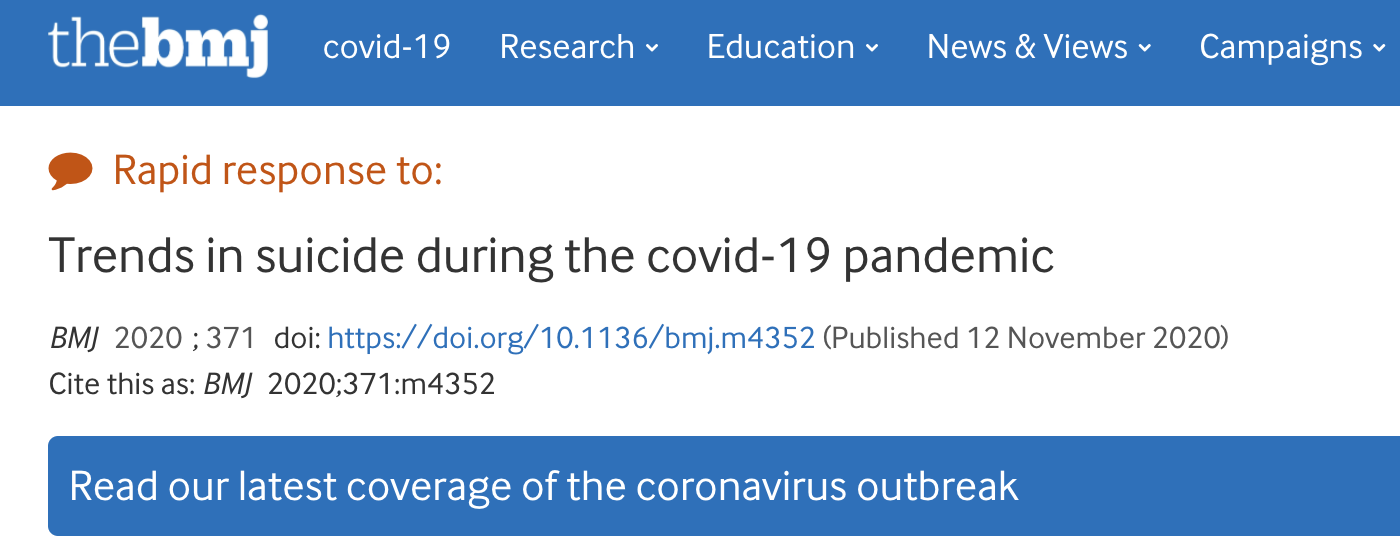
Rapid response to: ‘Trends in suicide during the COVID-19 pandemic.’ BMJ, January 2021 – Dr Duleeka Knipe, Prof Keith Hawton, Dr Mark Siynor, Dr Thomas Niederkrotenthaler.
Unfortunately, we have seen several sensational headlines and news reports arising from academic articles and wanted to raise the potential impact this may have on suicide risk more widely. At this challenging time, it is vitally important that the research community does not contribute to increasing the risk of suicide in vulnerable populations. We recommend that authors, peer-reviewers, university press offices and journal editors consider the following points when publishing information about suicide during the COVID-19 pandemic and its aftermath…

The impact of the COVID-19 pandemic on self-harm and suicidal behaviour: a living systematic review. The review is jointly lead by researchers from the University of Bristol and Swansea University. It is a collaborative effort involving colleagues from the Universities of Cork, Oxford, Manchester, Glasgow, and Ulster.
Given the likely rapidly expanding research evidence base on the pandemic’s impact on rates of suicide, suicidal behaviours and self-harm and emerging evidence about how best to mitigate such effects, it is important that the best available knowledge is made readily available to policymakers, public health specialists and clinicians as soon as is possible. To facilitate this, we are conducting a living systematic review focusing on suicide prevention in relation to COVID-19. Daily automated searches will feed into a web-based screening system. Key publications and evidence summaries will be shared with policymakers in the UK, Ireland and Internationally.

Factors influencing self-harm thoughts and self-harm behaviours over the first year of the COVID-19 pandemic in the UK: a longitudinal analysis of 49,324 adults. MR, September 2021 – Elise Paul, Daisy Fancourt.
There is concern that the COVID-19 pandemic and its aftermath will result in excess suicides by increasing known risk factors such as self-harm, but evidence on how pandemic-related risk factors contribute to changes in these outcomes is lacking.

Suicide Risk and Prevention During the COVID-19 Pandemic: One Year On. Taylor Francis Online, August 2021 – Mark Sinyor et al.
Emerging data from high and upper-middle-income countries indicate that suicide rates generally did not increase during the initial months of the COVID-19 pandemic, yet the pandemic’s impact on suicide is complex. We discuss the nuances of this relationship, how it may evolve over time, and describe the specific steps that governments and societies must take to mitigate harm and prevent suicides in the late stages and aftermath of the pandemic.
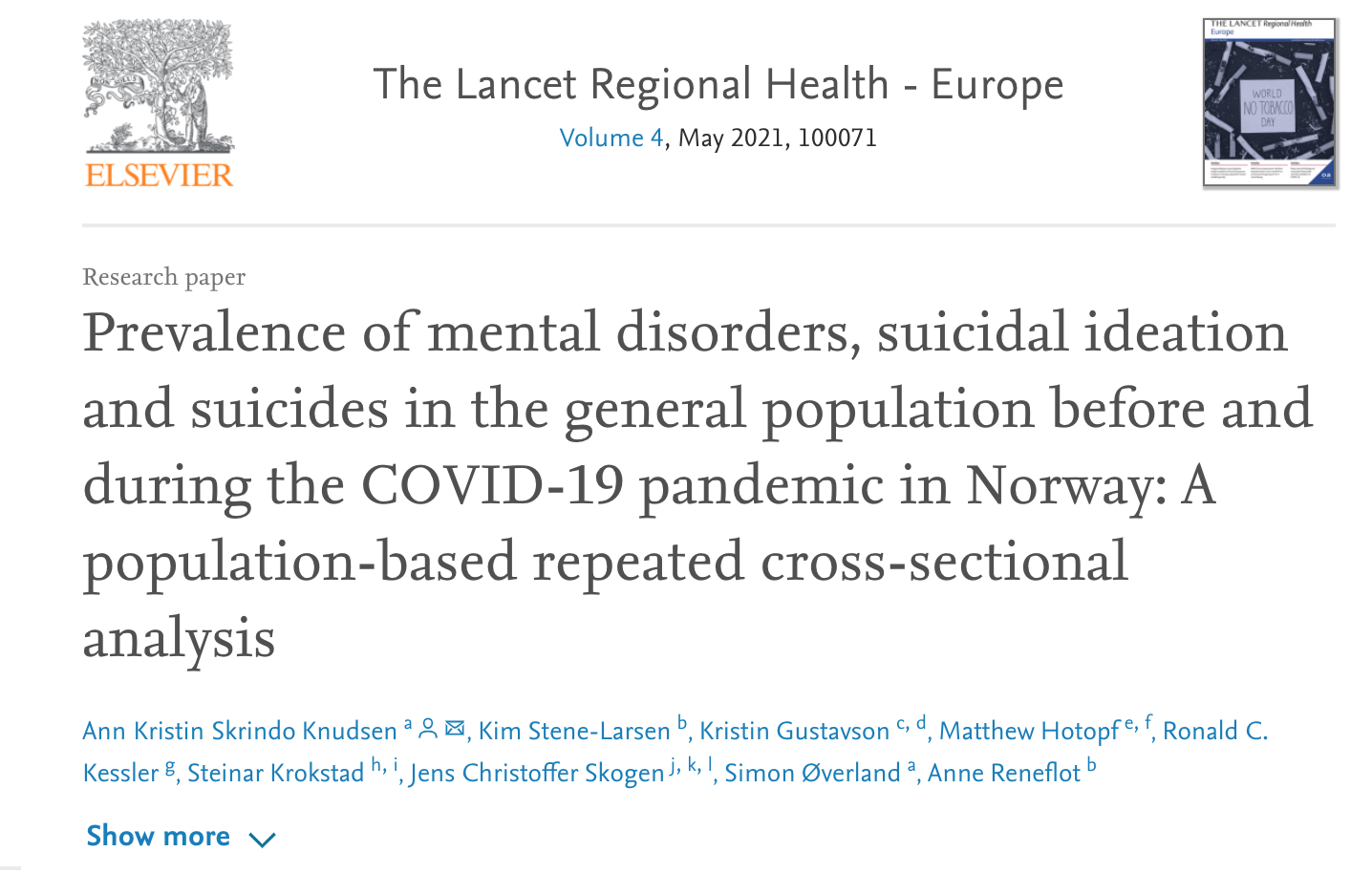
Prevalence of mental disorders, suicidal ideation and suicides in the general population before and during the COVID-19 pandemic in Norway: A population-based repeated cross-sectional analysis. The Lancet Regional Health Europe, May 2021 – Ann Kristin Skrindo Knudsen et al.
Self-report data on mental distress indicate a deterioration of population mental health in many countries during the COVID-19 pandemic. A Norwegian epidemiological diagnostic psychiatric interview survey was conducted from January to September 2020, allowing for comparison of mental disorder and suicidal ideation prevalence from before through different pandemic periods. Prevalence of suicide deaths were compared between 2020 and 2014–2018.

Prevalence of mental disorders, suicidal ideation and suicides in the general population before and during the COVID-19 pandemic in Norway: A population-based repeated cross-sectional analysis. The Lancet Regional Health Europe, May 2021 – Ann Kristin Skrindo Knudsen et al.
Self-report data on mental distress indicate a deterioration of population mental health in many countries during the COVID-19 pandemic. A Norwegian epidemiological diagnostic psychiatric interview survey was conducted from January to September 2020, allowing for comparison of mental disorder and suicidal ideation prevalence from before through different pandemic periods. Prevalence of suicide deaths were compared between 2020 and 2014–2018.
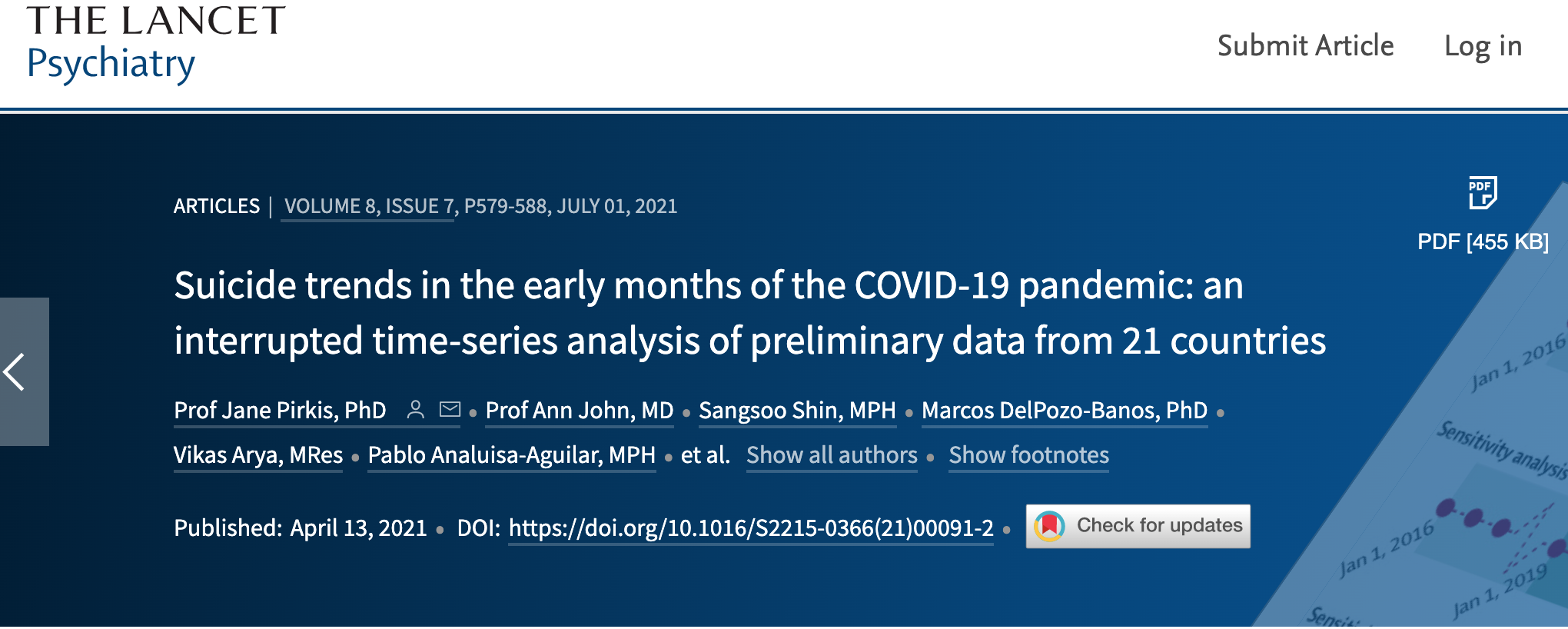
Suicide trends in the early months of the COVID-19 pandemic: an interrupted time-series analysis of preliminary data from 21 countries. The Lancet Psychiatry, April 2021 – Jane Pirkis et al.
The COVID-19 pandemic is having profound mental health consequences for many people. Concerns have been expressed that, at their most extreme, these consequences could manifest as increased suicide rates. We aimed to assess the early effect of the COVID-19 pandemic on suicide rates around the world.
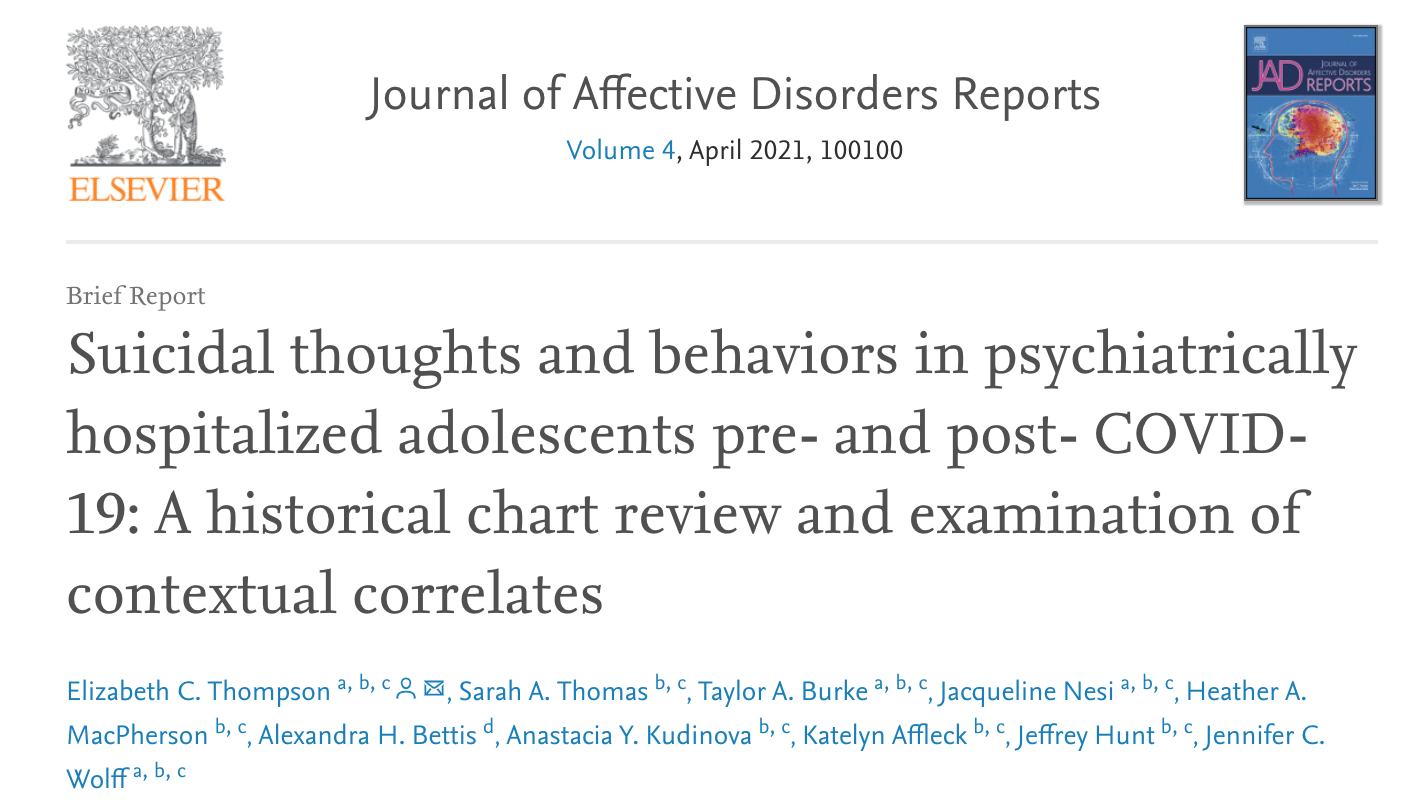
Suicidal thoughts and behaviors in psychiatrically hospitalized adolescents pre- and post- COVID-19: A historical chart review and examination of contextual correlates. JAD, April 2021 – Elizabeth C. Thompson et al.
This cross-sectional chart review utilizes hospital intake data, including self-reports of SA, SI (general and COVID-related), and COVID-specific stressors.
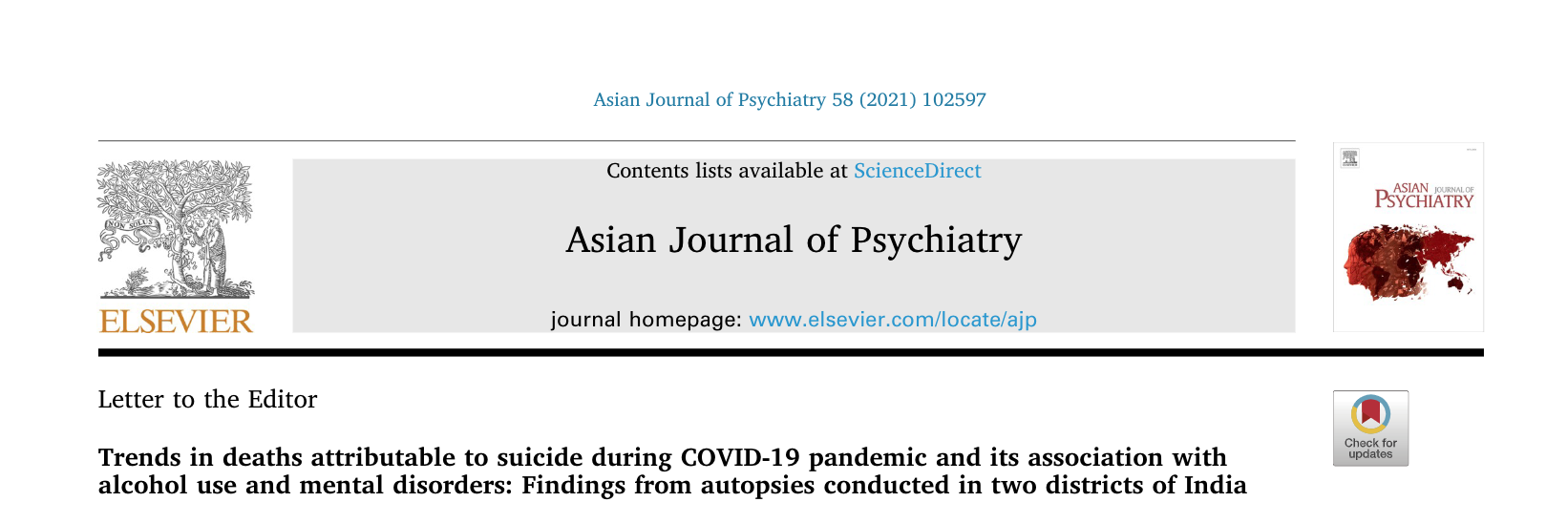
Trends in deaths attributable to suicide during COVID-19 pandemic and its association with alcohol use and mental disorders: Findings from autopsies conducted in two districts of India. Asian Journal of Psychiatry, April 2021 – Chittaranjan Behera, Sudhir Kumar Gupta, Swarndeep Singh, Yatan Pal Singh Balhara.
The present study was planned with the aim of assessing the impact of situation consequent to COVID-19 pandemic on the deaths due to suicide in two districts of New Delhi, India. We aimed to explore the changes in deaths due to suicide following the COVID-19 pandemic as compared to the previous year. Additionally, the autopsy profile of deaths due to suicides was examined to explore factors associated with suicide during the study period.
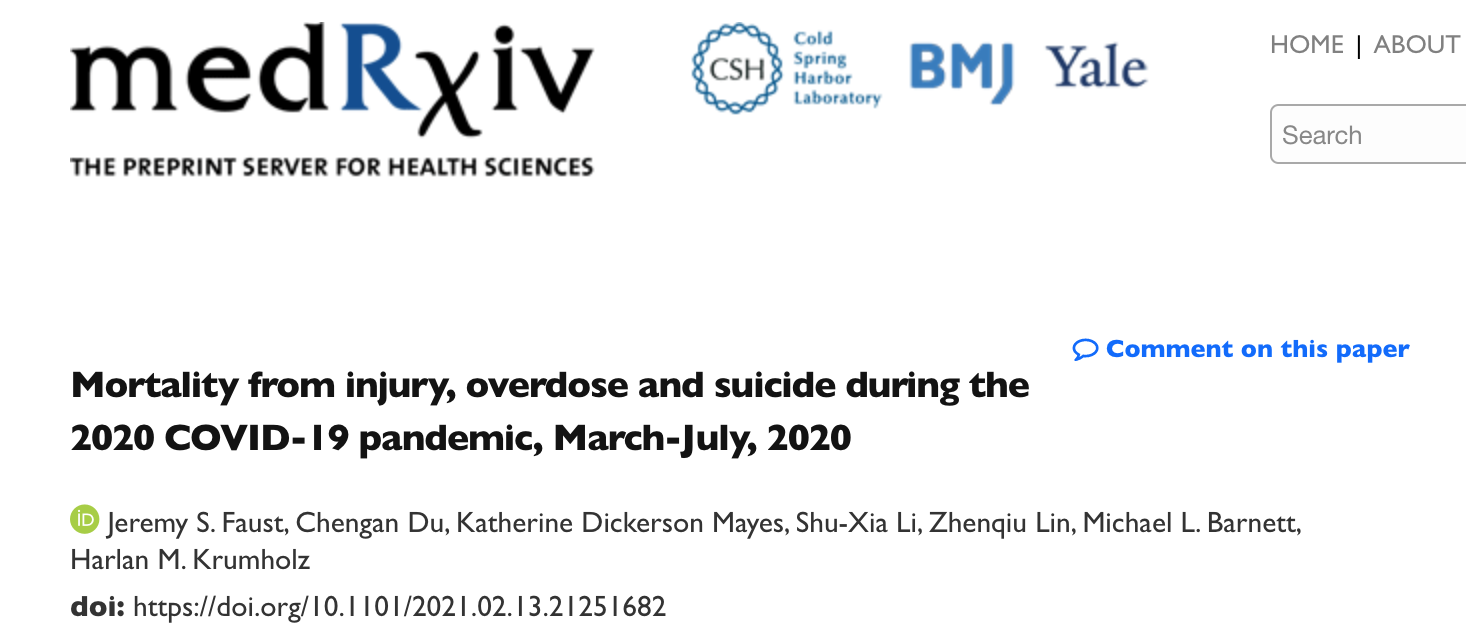
Mortality from injury, overdose and suicide during the 2020 COVID-19 pandemic. MR, February 2021 – Jeremy S. Faust et al.
The COVID-19 pandemic has been associated with substantial rates of all-cause excess mortality. The contribution of external causes of death to excess mortality including drug overdose, homicide, suicide, and unintentional injuries during the initial outbreak in the United States is less well documented.
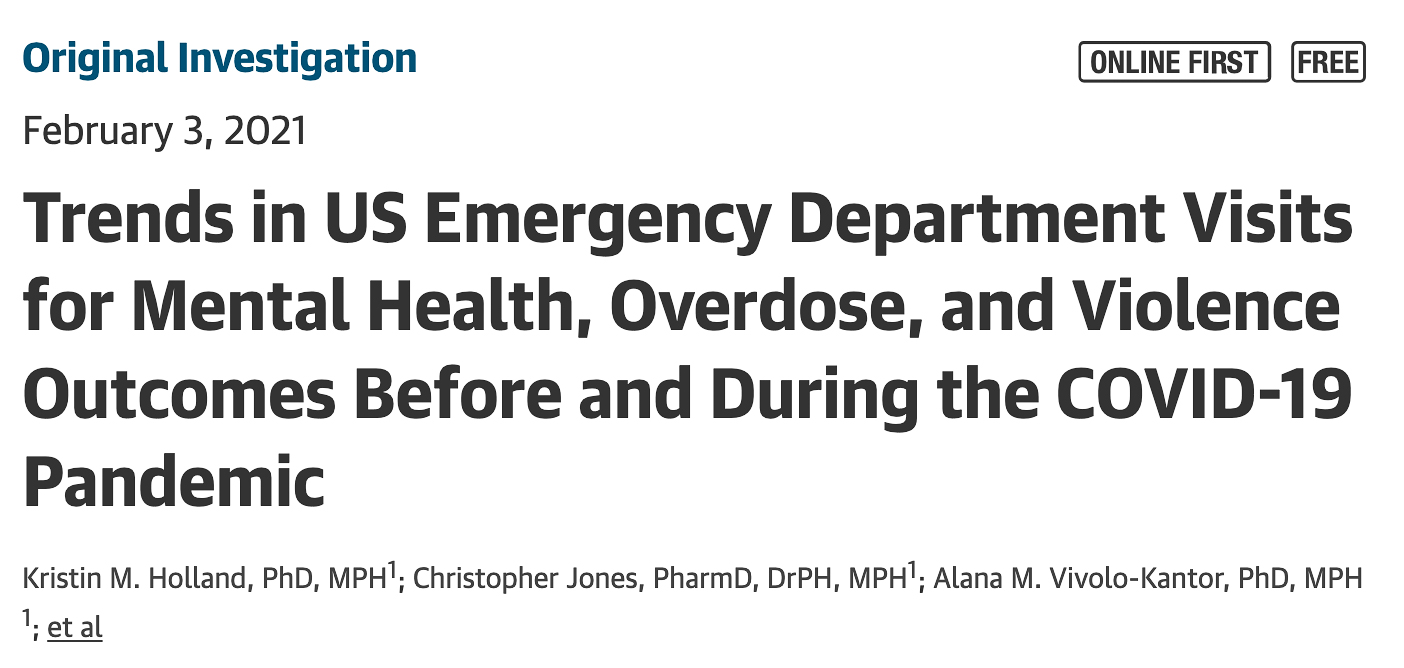
Trends in US Emergency Department Visits for Mental Health, Overdose, and Violence Outcomes Before and During the COVID-19 Pandemic.
JAMA, February 2021 – Kristin M. Holland, Christopher Jones, Alana M. Vivolo-Kantor et al.
This cross-sectional study of almost 190 million ED visits found that visit rates for mental health conditions, suicide attempts, all drug and opioid overdoses, intimate partner violence, and child abuse and neglect were higher in mid-March through October 2020, during the COVID-19 pandemic, compared with the same period in 2019.
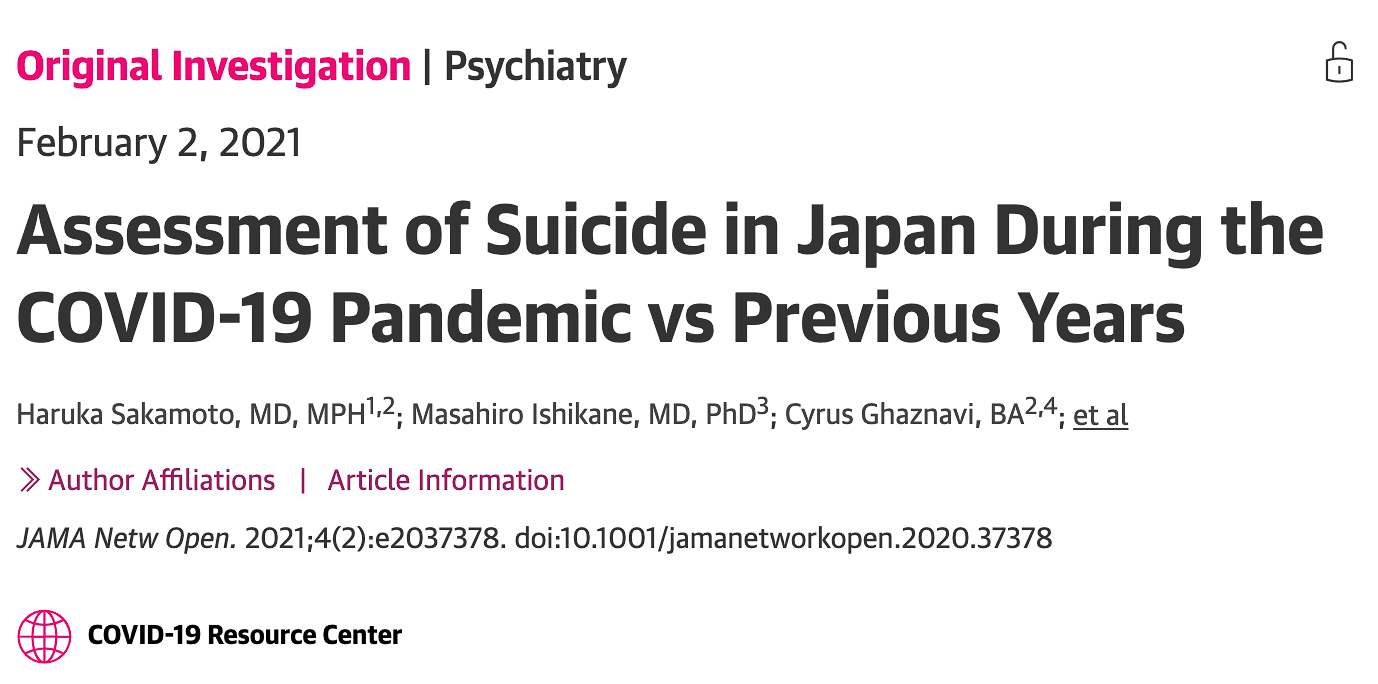
Assessment of Suicide in Japan During the COVID-19 Pandemic vs Previous Years. JAMA, February 2021 – Haruka Sakamoto, Masahiro Ishikane, Cyrus Ghaznavi et al.
In this cross-sectional study using national data on suicide mortality in Japan, including 90 048 individuals who died of suicide, suicide rates in 2020 compared with 2016 to 2019 were increased in October and November for men and in July through November for women, and the relative increases were particularly pronounced among men aged younger than 30 years and women aged younger than 30 years and 30 to 49 years.
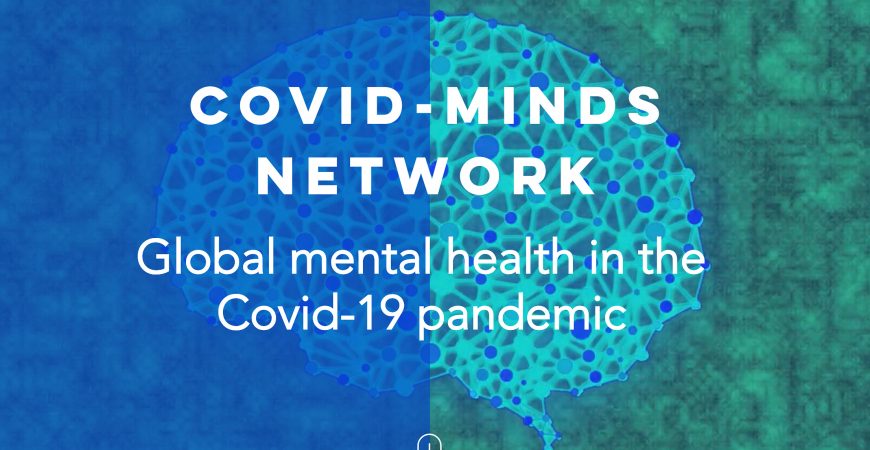
COVID-MINDS is a network of longitudinal studies on the global mental health impact of COVID-19.
By linking together studies from countries around the world, COVID-MINDS aims to support the sharing of protocols and data, the harmonisation of mental health measures, and the dissemination of findings to policy-makers and health bodies. Empirical research on mental health will be collated as it is published.
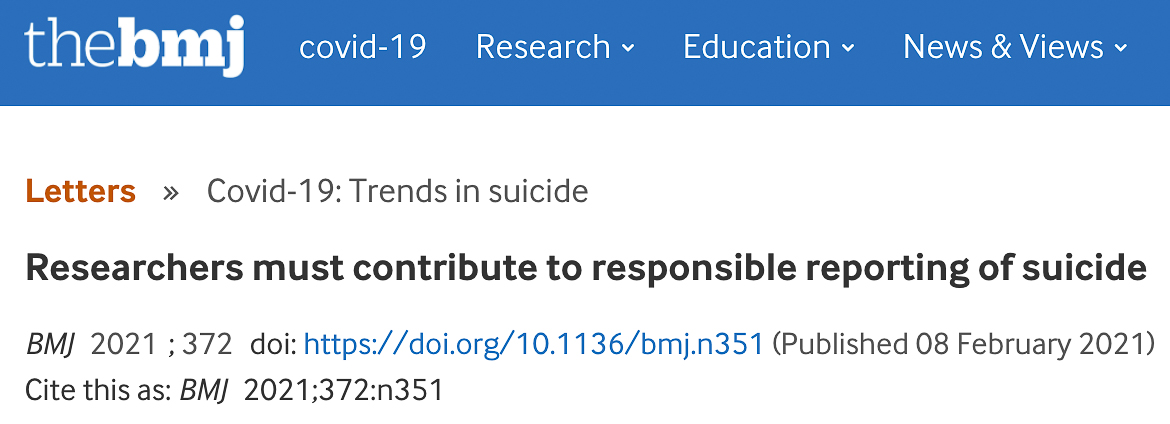
Researchers must contribute to responsible reporting of suicide.
BMJ, February 2021 – Duleeka Knipe, Keith Hawton, Mark Sinyor, Thomas Niederkrotenthaler.
In their editorial on trends in suicide in the covid-19 pandemic, John and colleagues discuss the role of the media in preventing suicide. We would like to add that academics themselves need to contribute to responsible reporting through carefully described research findings, including in relation to COVID-19.
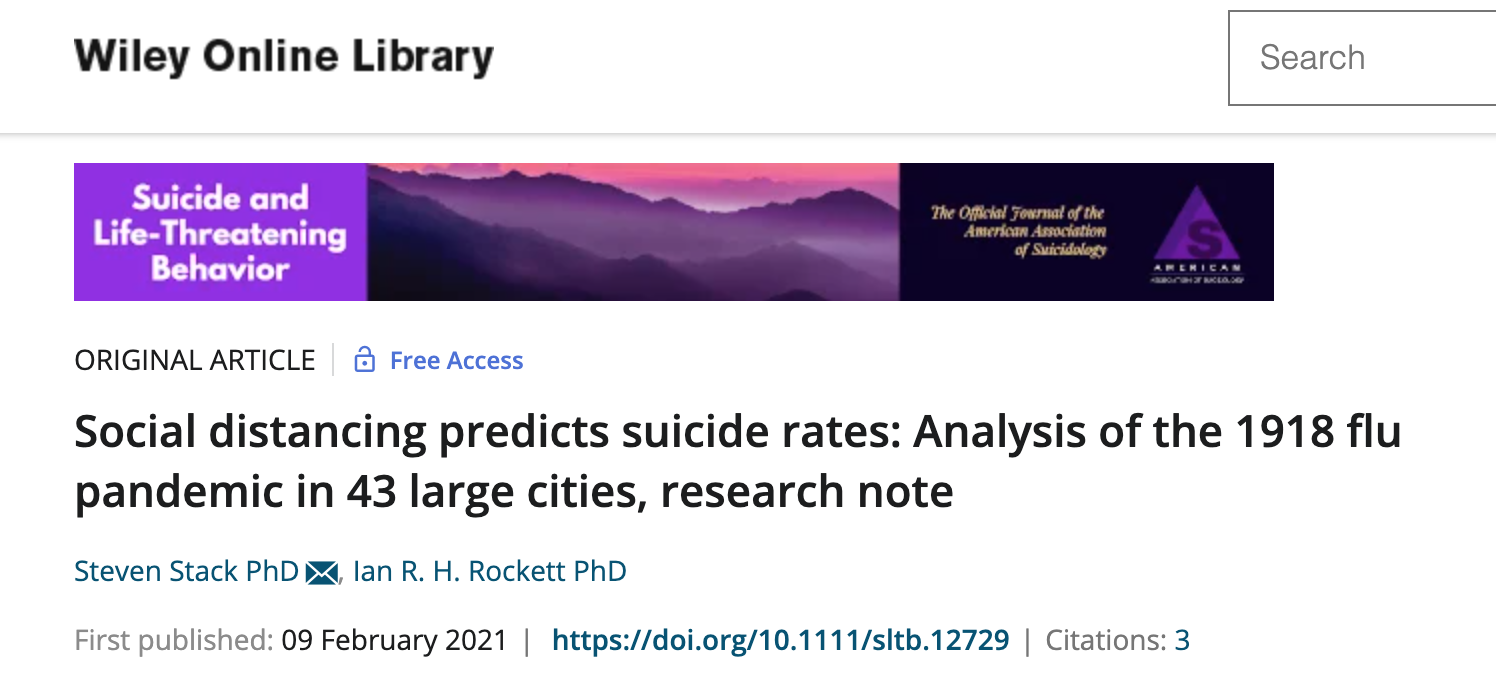
Social distancing predicts suicide rates: Analysis of the 1918 flu pandemic in 43 large cities, research note. Wiley, February 2021 – Steven Stack, Ian R. H. Rockett.
Social distancing (e.g., school and business closings) has been emphasized in current sociopolitical efforts in controlling COVID-19. Such policies are assumed to increase suicide risk through lowering social integration. While two studies have linked the presence of a pandemic to suicide rates, no study has assessed the degree of social distancing on suicide rates during a pandemic. The present study fills this gap with data on the extent of social distancing during the Spanish flu epidemic in 43 large cities. The results find that increasing social distancing increases suicide rates independent of the influenza mortality rate.

Trends in suicide rates during the COVID-19 pandemic restrictions in a major German city. Cambridge Core, January 2021 – Daniel Radeloff, Rainer Papsdorf et al.
It remains unclear whether the coronavirus disease 2019 (COVID-19) pandemic is having an impact on suicide rates (SR). Economic insecurity and mental disorders are risk factors for suicide, which may increase during the pandemic.

Increase in suicide following an initial decline during the COVID-19 pandemic in Japan. Nature Human Behavior, January 2021 – Takanao Tanaka & Shohei Okamoto.
This study provides large-scale evidence linking the COVID-19 outbreak to suicide fatalities using a city-by-month-level dataset covering the entire Japanese population of more than 120 million people.
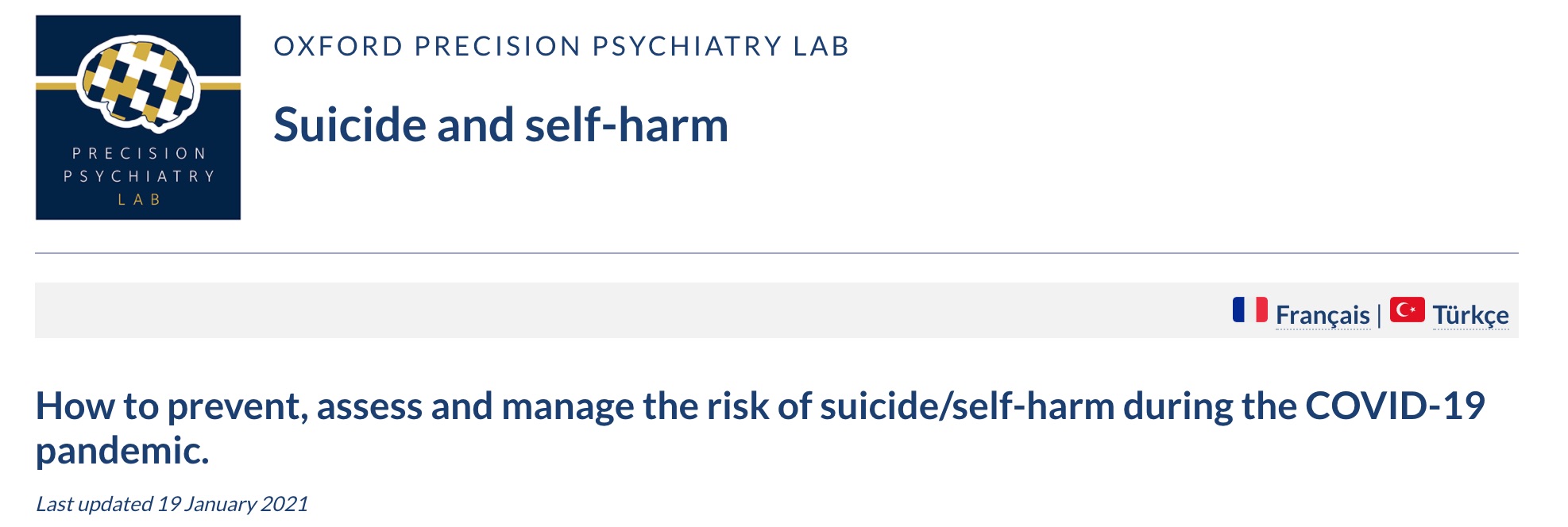
The tables were created with input and guidance from Professor Keith Hawton (Professor of Psychiatry, Centre for Suicide Research, University of Oxford; Consultant Psychiatrist, Oxford Health NHS Foundation Trust), Dr Alexandra Pitman (Honorary Consultant Psychiatrist, Camden and Islington NHS Foundation Trust; Associate Clinical Professor, UCL Division of Psychiatry) and Karen Lascelles (Nurse Consultant, Oxford Health NHS Foundation Trust).

Monthly Suicide Rates During the COVID-19 Pandemic: Evidence from Japan. SSRN, January 2021 – Gerardo Ruiz Sanchez.
This paper uses 2018-2020 prefecture-month-year level and gender-month-year level data on suicide rates in Japan to document how suicide rates are evolving during the COVID-19 pandemic.

The tables were created with input and guidance from Professor Keith Hawton (Professor of Psychiatry, Centre for Suicide Research, University of Oxford; Consultant Psychiatrist, Oxford Health NHS Foundation Trust), Dr Alexandra Pitman (Honorary Consultant Psychiatrist, Camden and Islington NHS Foundation Trust; Associate Clinical Professor, UCL Division of Psychiatry) and Karen Lascelles (Nurse Consultant, Oxford Health NHS Foundation Trust).

Pattern of Suicidal Deaths in the First Month of Lockdown at A Tertiary Care Hospital: a Time Trend Analysis.
Indian Journal of Forensic Medicine & Toxicology, October-December 2020 – Deepmalya Sengupta, Saikat Saha, Pranabesh Bharatee, Rajib Prasad.
Lockdowns and quarantines were set up in various countries around the world to combat the Corona virus pandemic. The pandemic has its mental health consequences which have been aggravated by the lockdown measures. The resulting psychological distress and depression has ultimately led to suicides. This study explores the trends of suicide in the month of the lockdown and compared it with those to the prior months.
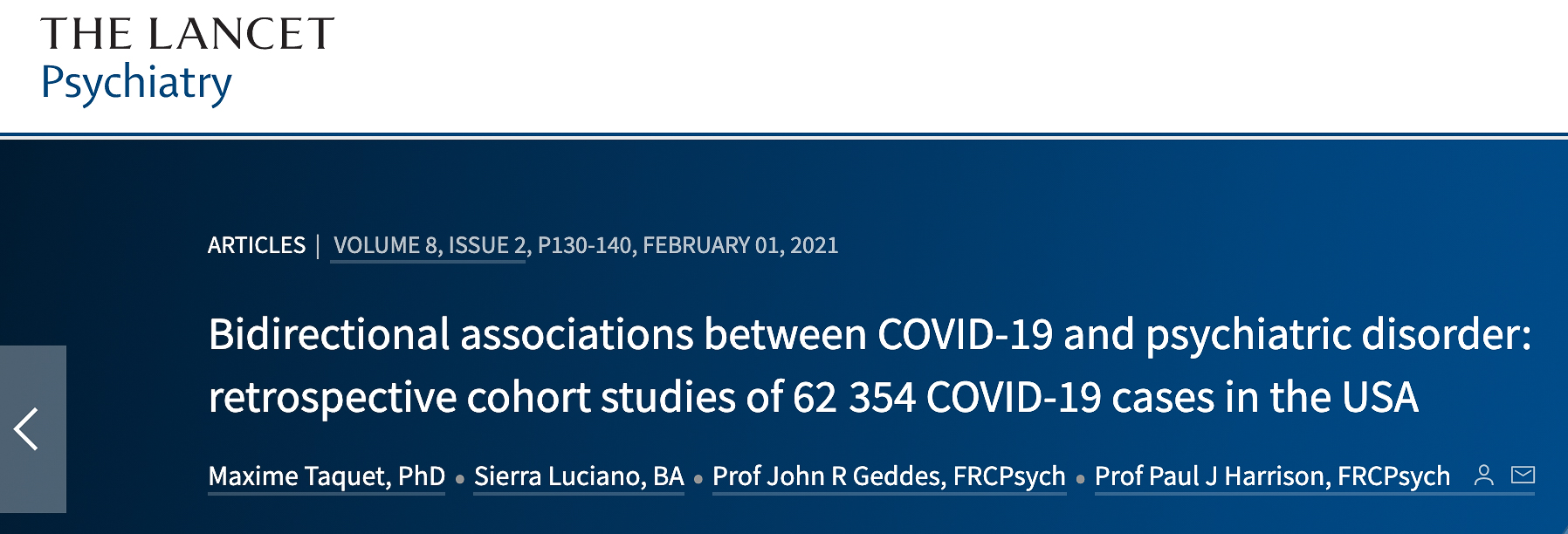
Bidirectional associations between COVID-19 and psychiatric disorder: retrospective cohort studies of 62354 COVID-19 cases in the USA.
The Lancet Psychiatry, November 2020 – Maxime Taquet, Sierra Luciano, John R Geddes and Paul J Harrison.
In this electronic health record network cohort study using data from 69 million individuals, 62 354 of whom had a diagnosis of COVID-19, we assessed whether a diagnosis of COVID-19 (compared with other health events) was associated with increased rates of subsequent psychiatric diagnoses, and whether patients with a history of psychiatric illness are at a higher risk of being diagnosed with COVID-19.
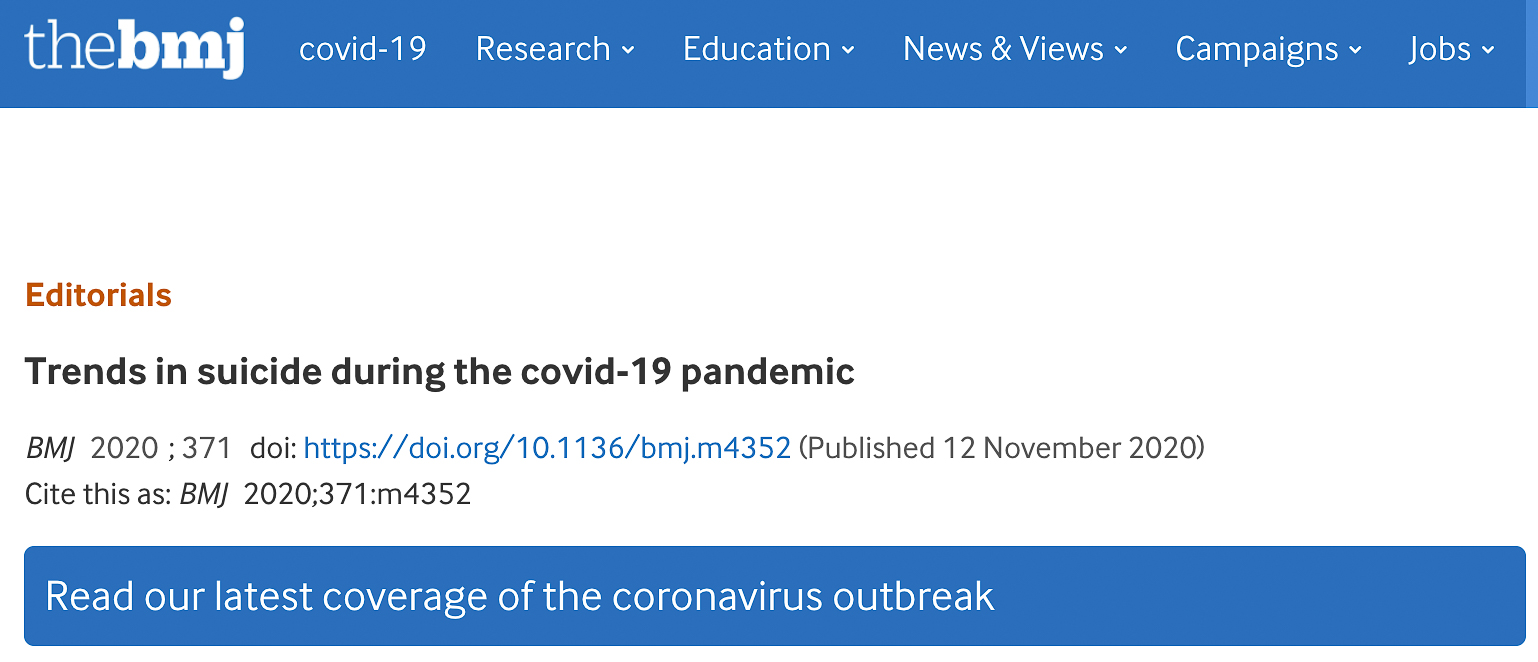
Trends in Suicide During the COVID-19 Pandemic. BMJ, November 2020 – Ann John, Jane Pirkis, David Gunnell, Louis Appleby, Jacqui Morrissey.
As many countries face new stay-at-home restrictions to curb the spread of covid-19, there are concerns that rates of suicide may increase—or have already increased.

Suicide in the Time of COVID-19: Review & Recommendations. Routledge, November 2020 – Gil Zalsman et al.
The International Academy of Suicide Research (IASR) is an organization dedicated to promote high standards of research and scholarship in the field of suicidal behaviour to support efforts to prevent suicide globally. This IASR’s board position paper gives recommendations for suicide research during the COVID-10 pandemic. Clinical research has to be modified due to the COVID-19 shutdown.
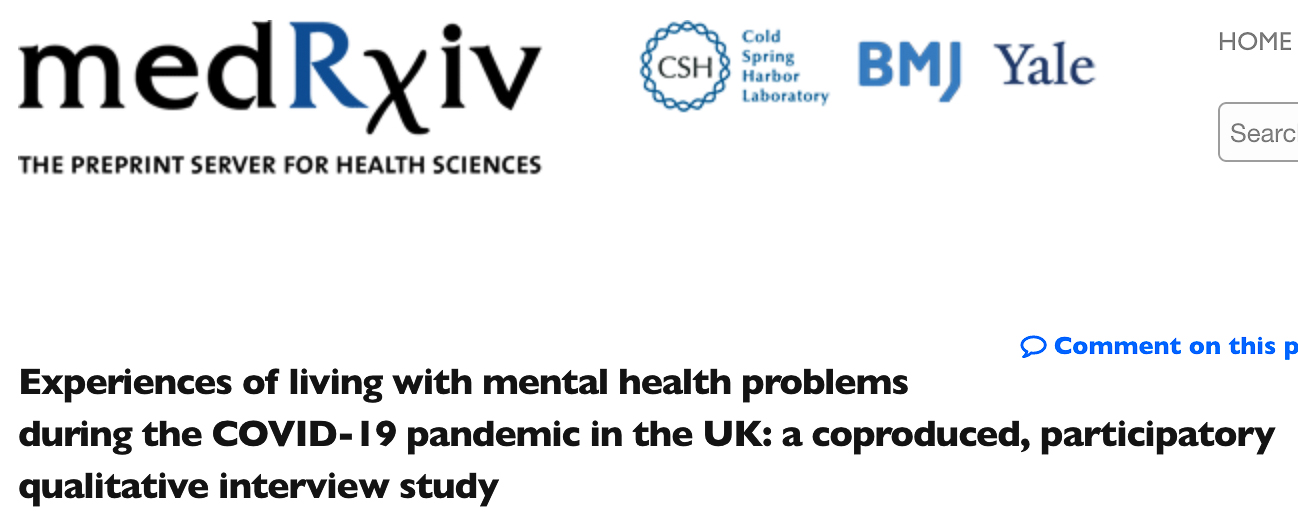
Experiences of living with mental health problems during the COVID-19 pandemic in the UK: a coproduced, participatory qualitative interview study MR, November 2020 – Steven Gillard et al.
Research is beginning to quantify the impact of COVID-19 on people with pre-existing mental health conditions. This paper addresses a lack of in-depth qualitative research exploring their experiences and perceptions of how life has changed at this time.
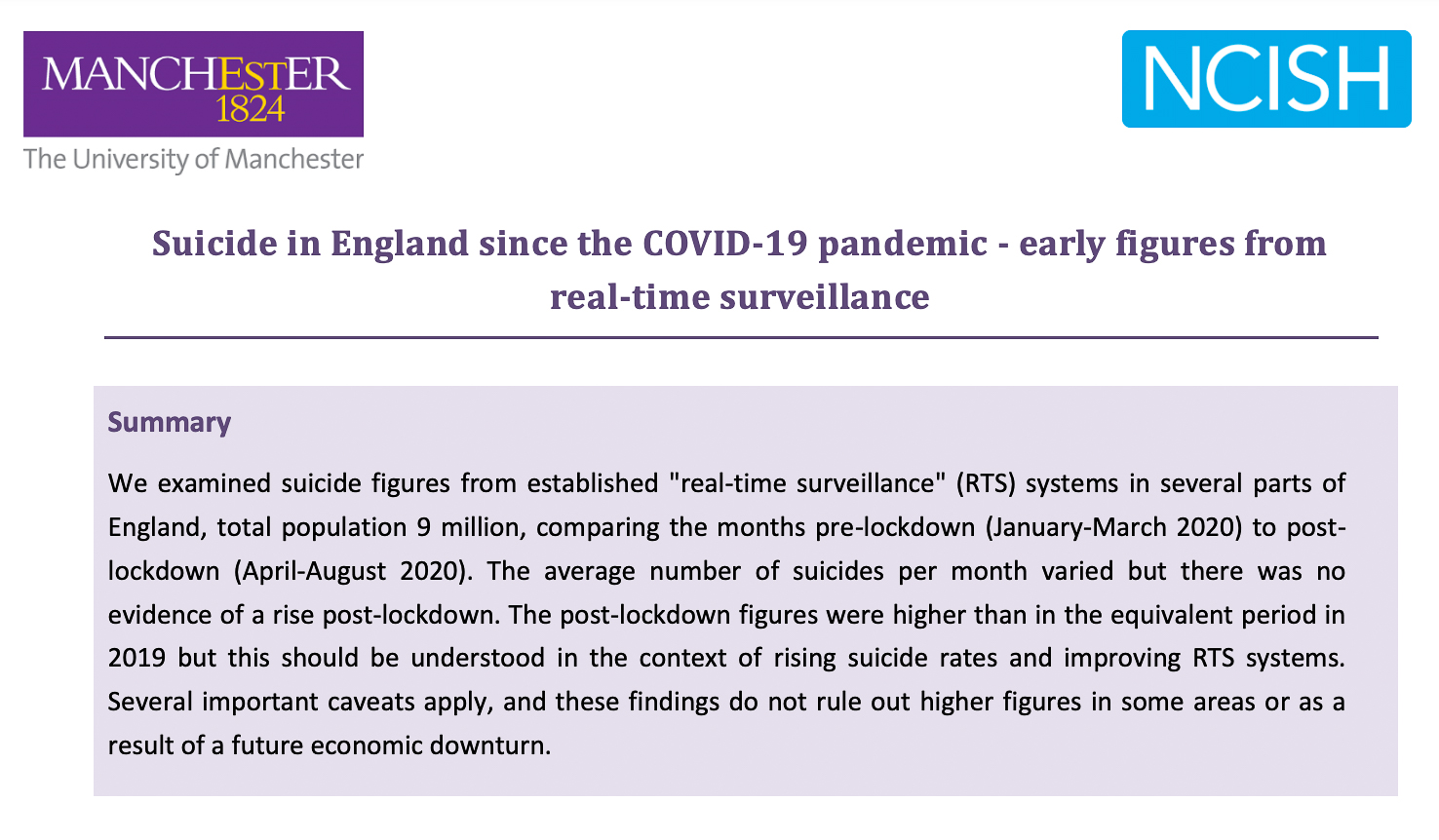
Suicide in England since the COVID-19 pandemic – early figures from real-time surveillance. The University of Manchester – Prepared by Louis Appleby, Nav Kapur, Pauline Turnbull, Nicola Richards and the National Confidential Inquiry team.
This paper examines suicide figures from established “real-time surveillance” (RTS) systems in several parts of England, total population of 9 million, comparing the months pre-lockdown (January-March 2020) to post lockdown (April-August 2020).
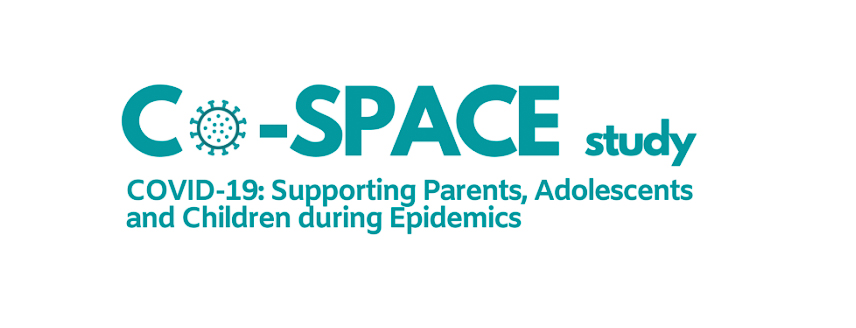
Changes in children and young people’s mental health symptoms from March to October 2020.
Co-Space Oxford, November 2020 – S Skripkauskaite, S Pearcey, J Raw, A Shum, P Waite and C Creswell.
The Co-SPACE project is tracking the mental health of school-aged children and young people aged 4-16 years (at the beginning of the study) throughout the COVID-19 crisis. The findings will help identify what protects children and young people from deteriorating mental health over time and at particular stress points. Findings are being shared directly with health and education services to inform the development and provision of effective support for children and families.

Reporting on suicidal behaviour and COVID-19 – Need for caution
The Lancet Psychiatry, November 2020 – K Hawton, L Marzano, L Fraser, M Hawley, E Harris-Skillman and Y Xazvier Lainez.
News reporting on suicidal behaviour can have a considerable influence on suicide and self-harm in the general population. This issue is particularly relevant during the COVID-19 pandemic. With a rising number of deaths from COVID-19 infection and negative effects of the pandemic on key factors that are associated with suicide, including social isolation, unemployment, and financial problems, there is understandable concern that suicide rates might increase.
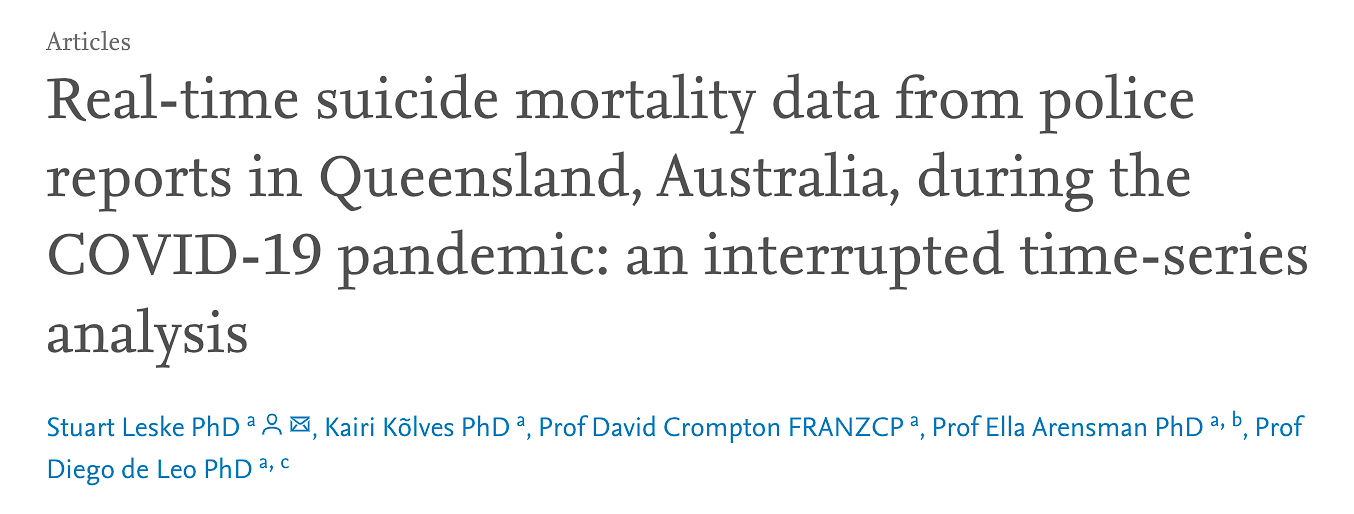
Real-time suicide mortality data from police reports in Queensland, Australia, during the COVID-19 pandemic: an interrupted time-series analysis The Lancet Psychiatry, November 2020 – Stuart Leske, Kairi Kõlve, David Crompton, Ella Arensman and Diego de Leo.
Deaths by suicide can increase during infectious disease outbreaks. This study analysed suspected suicide rates in 2020 relative to 2015–19 to assess any early effects of the COVID-19 pandemic in Queensland, Australia.

Suicide Deaths during the Stay-at-Home Advisory in Massachusetts. MR, October 2020 – J S. Faust, S B. Shah, Chengan Du, Shu Xia Li, Zhenqiu Lin, Harlan M. Krumholz.
Many believe that shelter-in-place or stay-at-home policies might cause an increase in so-called deaths of despair. While increases in psychiatric stressors during the COVID-19 pandemic are anticipated, whether suicide rates changed during stay-at-home periods has not been described.

Increased Psychological Distress during COVID-19 and Quarantine in Ireland: A National Survey JCM, October 2020 – T Burke, A Berry, L K. Taylor, O Stafford, E Murphy, M Shevlin, L McHugh and A Carr.
The emergence of the coronavirus pneumonia (COVID-19) resulted in a global pandemic. The psychological impact of an epidemic is multifaceted and acute, with long-term consequences. Methods: A cross-sectional online survey-based design was employed, assessing the psychological impact of COVID-19 on members of the Irish public during the quarantine period of COVID-19 in Ireland.

Managing outbreaks of highly contagious diseases in prisons: a systematic review BMJ, October 2020 – Gabrielle Beaudry, Shaoling Zhong, Daniel Whiting, Babak Javid, John Frater, Seena Fazel.
There are reports of outbreaks of COVID-19 in prisons in many countries. Responses to date have been highly variable and it is not clear whether public health guidance has been informed by the best available evidence. A systematic review was conducted to synthesise the evidence on outbreaks of highly contagious diseases in prison.
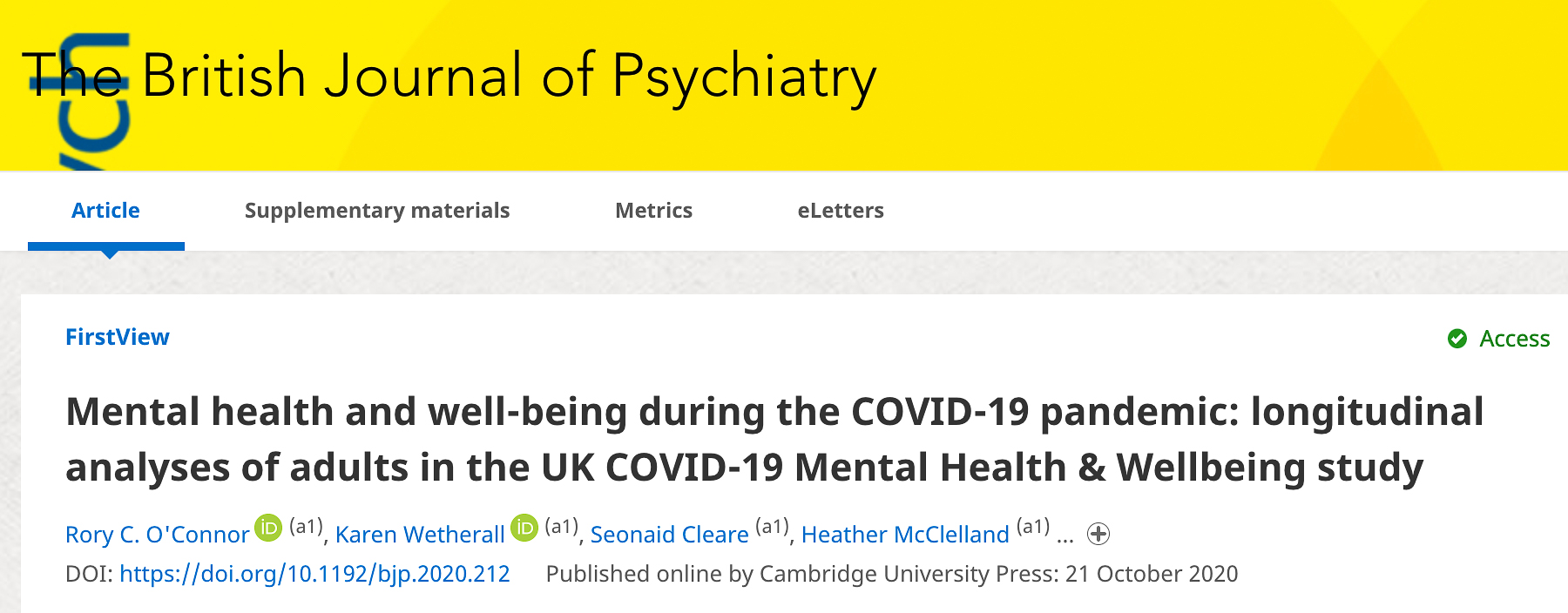
Mental health and well-being during the COVID-19 pandemic: longitudinal analyses of adults in the UK COVID-19 Mental Health & Wellbeing study The British Journal of Psychiatry, Oct 2020 – Rory C. O’Connor, Karen Wetherall, Seonaid Cleare et al.
The effects of coronavirus disease 2019 (COVID-19) on the population’s mental health and well-being are likely to be profound and long-lasting. This paper investigates the trajectory of mental health and well-being during the first 6 weeks of lockdown in adults in the UK.

The Impact of Infectious Disease-Related Public Health Emergencies on Suicide, Suicidal Behavior, and Suicidal Thoughts A Systematic Review Crisis, October 2020 – Tiago C. Zortea, Connor T.A Brenna, Mary Joyce et al.
Infectious disease-related public health emergencies (epidemics) may increase suicide risk, and high-quality evidence is needed to guide an international response, this paper discusses the potential impacts of epidemics on suicide-related outcomes.
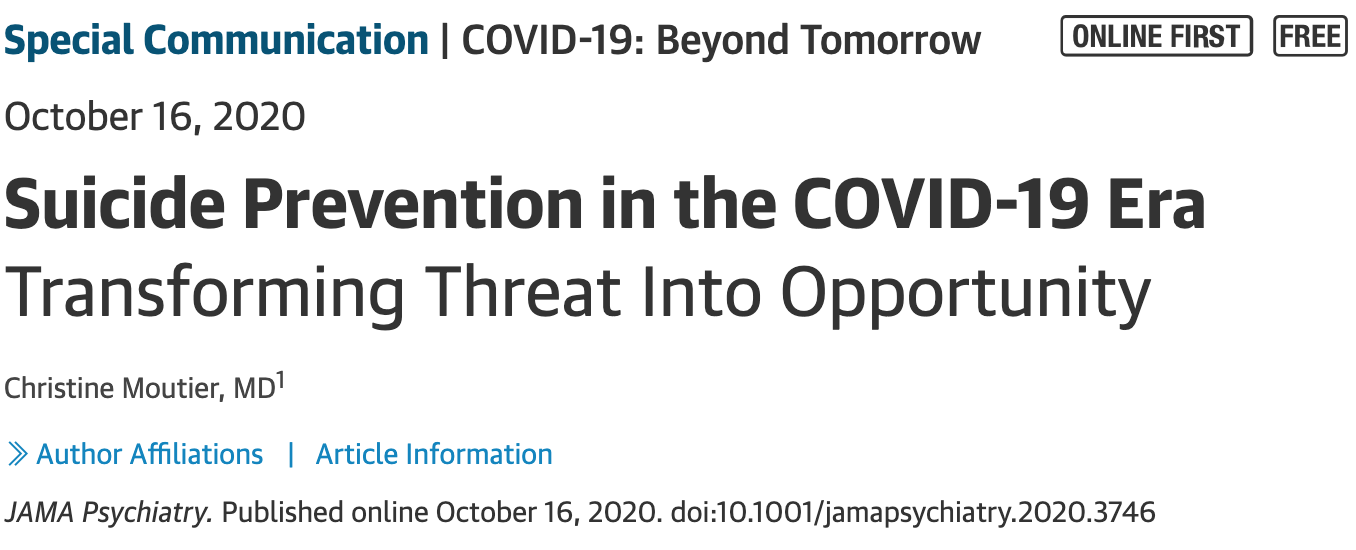
Suicide Prevention in the COVID-19 Era: Transforming Threat Into Opportunity JAMA Psychiatry, October 2020 – Christine Moutier.
International and US experts on suicide have expressed concerns about the potential the coronavirus disease 2019 (COVID-19) pandemic has to increase the risk of suicide through its effects on a number of well-established suicide risk factors.
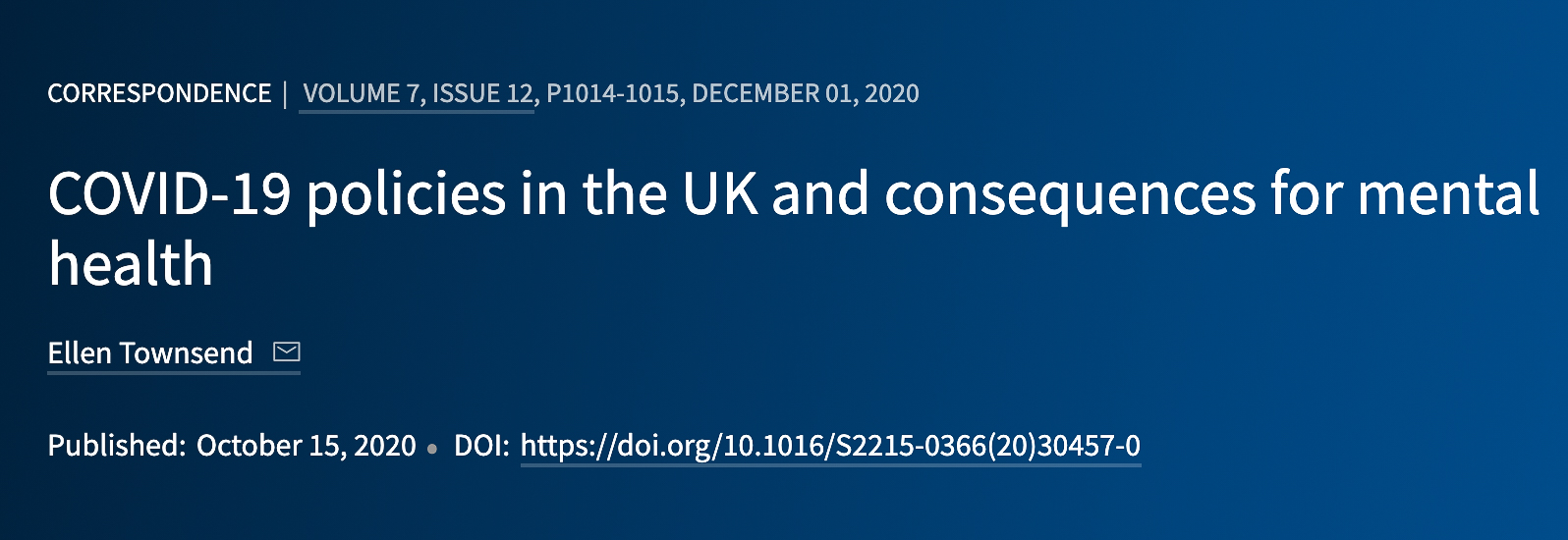
COVID-19 policies in the UK and consequences for mental health
The Lancet Psychiatry, October 2020 – Ellen Townsend.
The lockdown to “flatten the curve” of COVID-19 has caused harm to many people globally. Over the past 6 months, it has been nearly impossible to discern what the UK government strategy is in relation to the virus: suppression, or following of the model used in Sweden to foster community immunity?
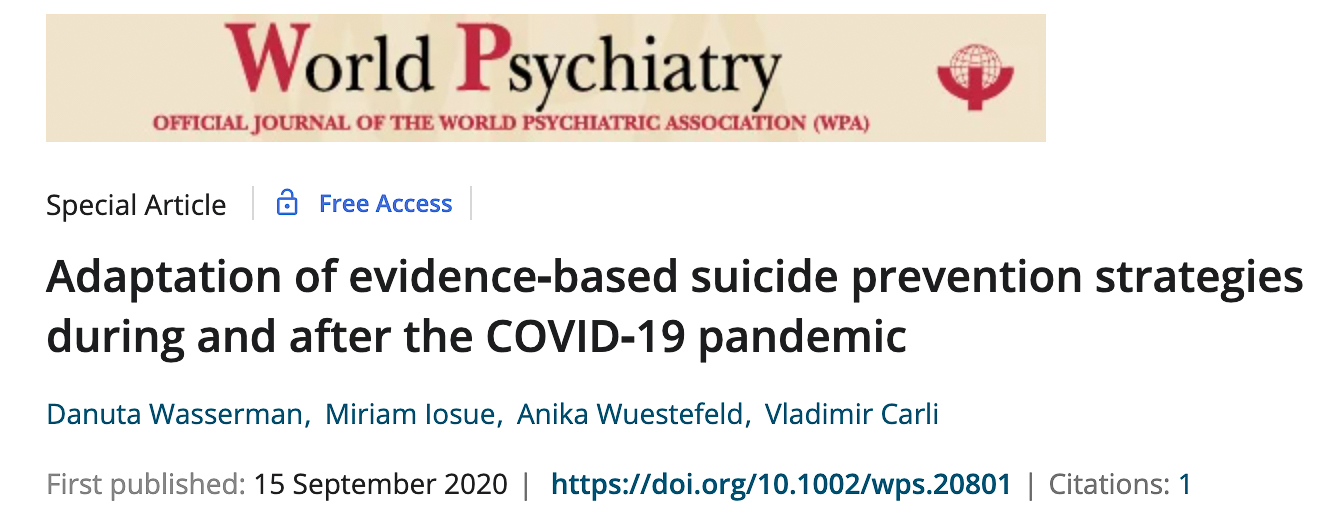
Adaptation of evidence‐based suicide prevention strategies during and after the COVID‐19 pandemic
World Psychiatry, September 2020 – D Wasserman, M Iosue, A Wuestefeld, V Carli.
The aim of this paper is to systematically evaluate the influence of the COVID‐19 pandemic on risk and protective factors for suicide at the societal, community, relationship and individual levels. Adjustments of evidence‐based universal, selective and indicated suicide prevention strategies are recommended to provide guidance to clinicians, public mental health professionals, politicians and decision‐makers.
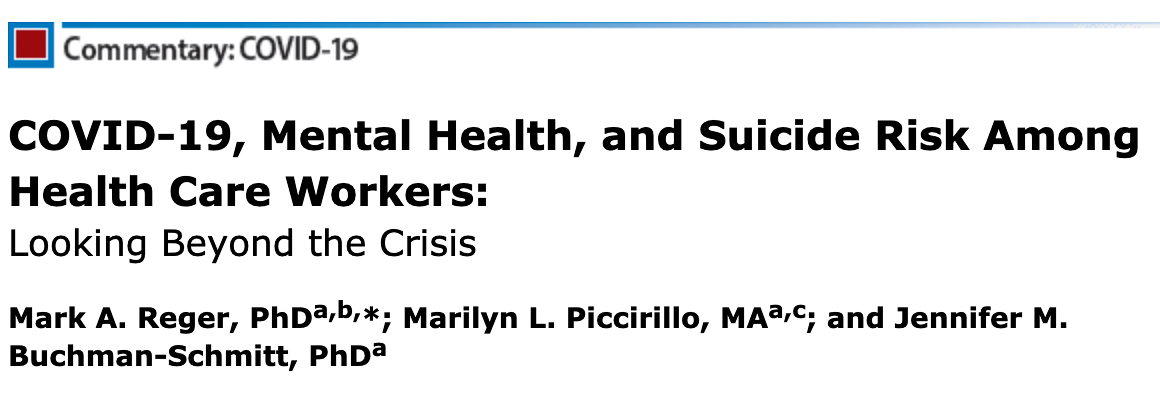
COVID-19, Mental Health, and Suicide Risk Among Health Care Workers: Looking Beyond the Crisis
The Journal of Clinical Psychiatry, August 2020 – Mark A. Reger, Marilyn L. Piccirillo and Jennifer M. Buchman-Schmitt.
The world faced substantial challenges in meeting the demands for mental health care, even before the emergence of coronavirus disease (COVID-19). With the havoc caused by the pandemic and the impending impact on economies, social structures, and health systems, a global mental health crisis is arising.

The Interpersonal and Psychological Impacts of COVID-19 on Risk for Late-Life Suicide The Gerontologist, August 2020 – Julia L Sheffler, Thomas E Joiner and Natalie J Sachs-Ericsson.
Older adults experience increased risk for suicide compared to the general population, and the circumstances surrounding the Coronavirus Disease 2019 (COVID-19) may potentiate this risk. This paper discusses how current COVID-19 pandemic-related policies are likely to harm older adults disproportionately.
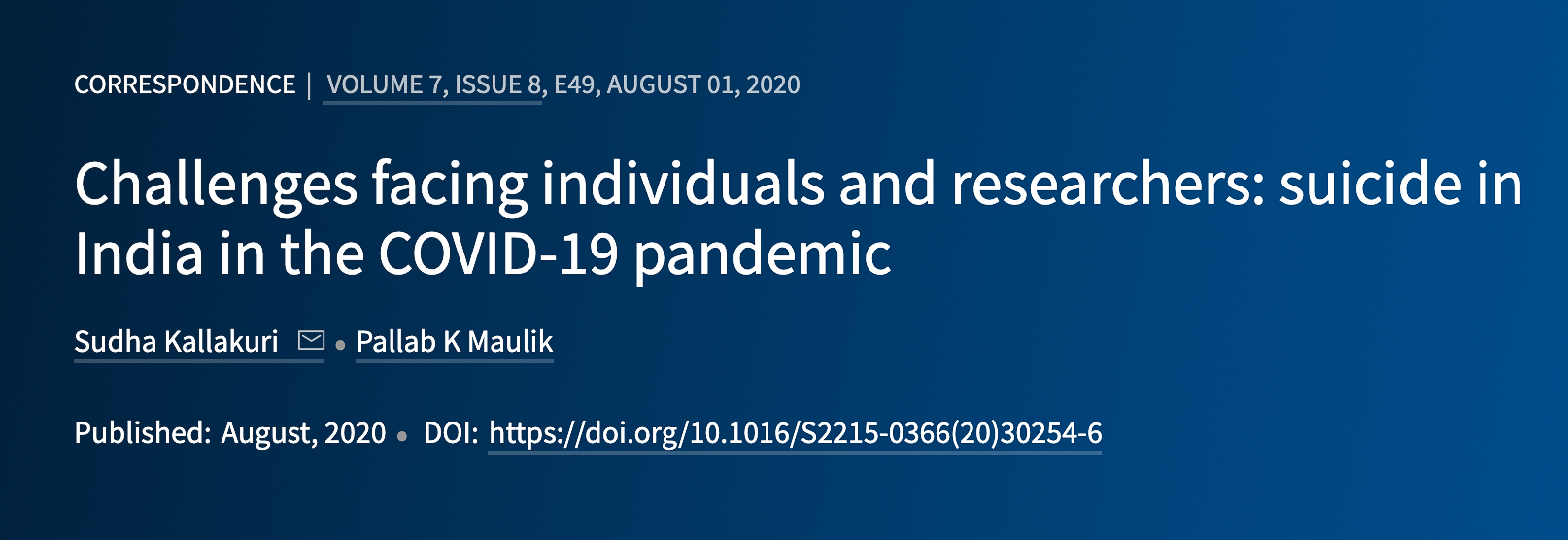
Challenges facing individuals and researchers: suicide in India in the COVID-19 pandemic
The Lancet Psychiatry, August 2020 – Sudha Kallakuri and Pallab K Maulik.
A recent article in a leading Indian newspaper, The Hindu, expressed concern about a potential rise in deaths by suicide during the COVID-19 pandemic. This paper discusses how multipronged approaches are needed to address self-harm and suicide during the COVID-19 pandemic.
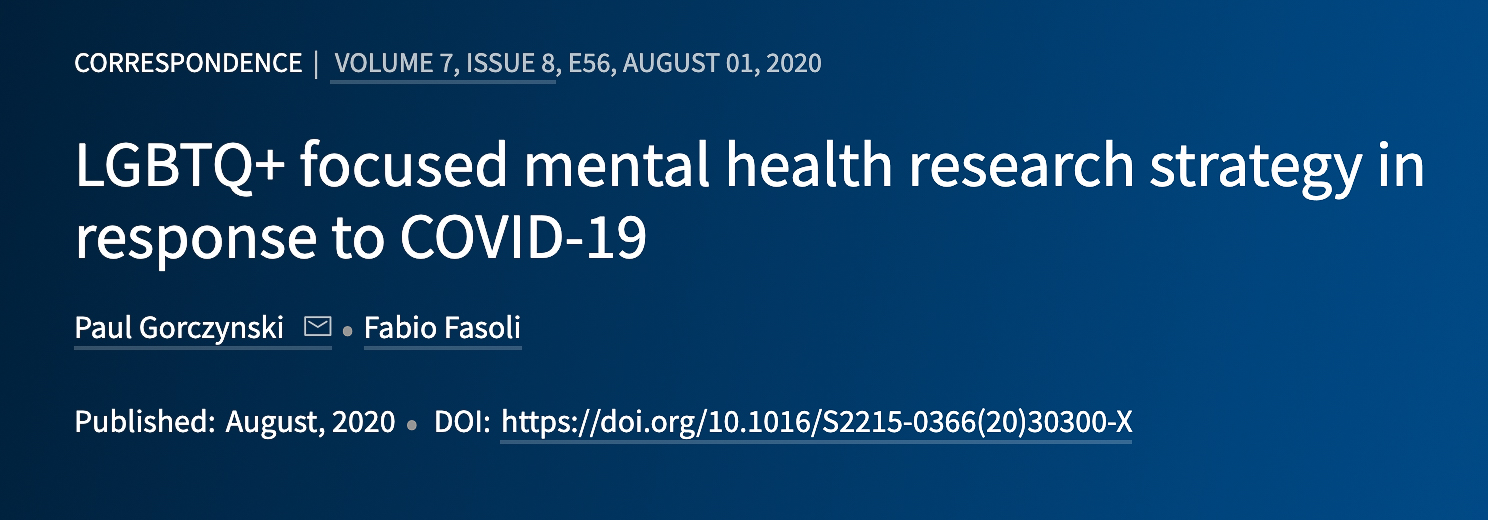
LGBTQ+ focused mental health research strategy in response to COVID-19 The Lancet Psychiatry, August 2020 – Paul Gorczynski and Fabio Fasoli.
Several researchers and health organisations have shown that health research disparities exist between lesbian, gay, bisexual, transgender, queer, and questioning (LGBTQ+) populations and heterosexual people. Such research gaps have contributed to a health knowledge deficit for LGBTQ+ populations and resulted in few evidence-based interventions that address the many health inequities that disproportionately affect these populations across the lifespan.
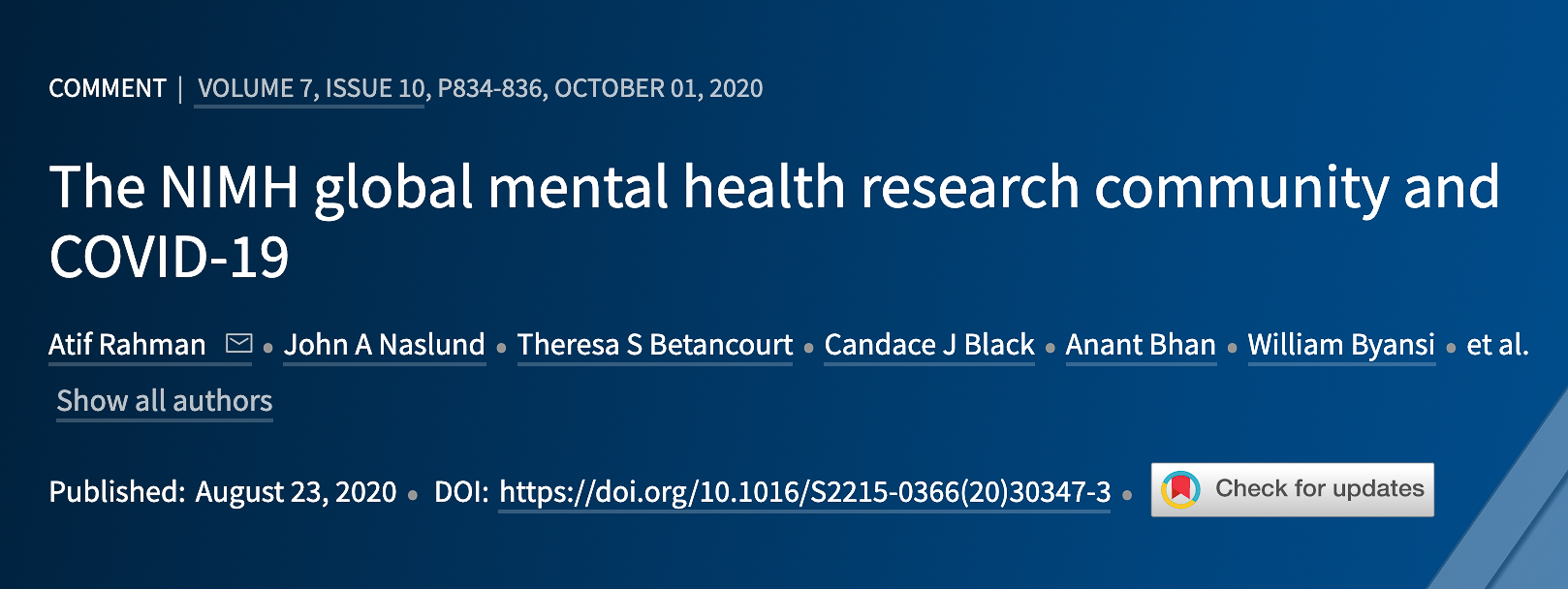
The NIMH global mental health research community and COVID-19 The Lancet Psychiatry, August 2020 – Atif Rahman, John A Naslund, Theresa S Betancourt et al.
The world faced substantial challenges in meeting the demands for mental health care, even before the emergence of coronavirus disease (COVID-19). With the havoc caused by the pandemic and the impending impact on economies, social structures, and health systems, a global mental health crisis is arising.

Suicide Research, Prevention, and COVID-19: Towards a Global Response and the Establishment of an International Research Collaboration. Crisis, July 2020 – Thomas Niederkrotenthaler, David Gunnell, Ella Arensman, Jane Pirkis, Louis Appleby, Keith Hawton, Ann John, Nav Kapur, Murad Khan, Rory C. O’Connor, Steve Platt and The International COVID-19 Suicide Prevention Research Collaboration.
Suicide prevention responses need to be informed by research that is as specific as possible to the current situation and takes account of the many mechanisms that have an impact on suicide, as they may vary during the different phases of the pandemic. At the same time, given the risks involved, strategic development of policy and implementation responses cannot wait until all aspects of the epidemiology and consequences of the disease on mental health and risk of suicide are understood.
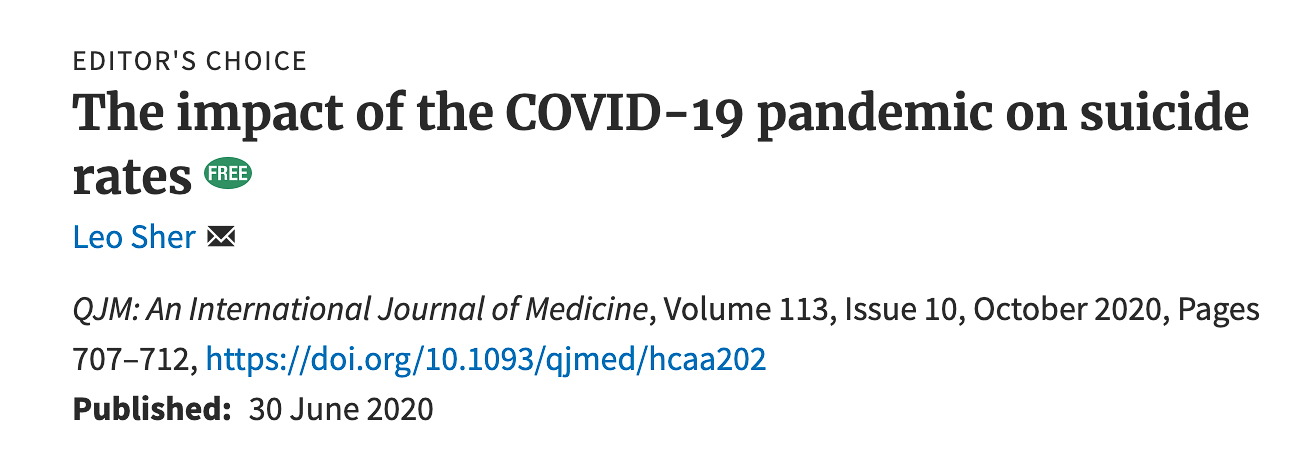
The impact of the COVID-19 pandemic on suicide rates.
QJM: An International Journal of Medicine, June 2020 – Leo Sher.
Multiple lines of evidence indicate that the coronavirus disease 2019 (COVID-19) pandemic has profound psychological and social effects. The psychological sequelae of the pandemic will probably persist for months and years to come.

Focusing on health-care providers’ experiences in the COVID-19 crisis
Lancet Global Health, June 2020 – Yang Xiong, Lingli Peng.
This study provides a holistic picture of health-care providers’ experiences for the international community and emphasises that sufficient personal protective equipment, reasonable work schedules, an effective communication environment, monitoring and supervision of infection control, and professional psychological support are necessary to improving the experiences of health-care providers.

Multidisciplinary research priorities for the COVID-19 pandemic: a call for action for mental health science
Lancet Psychiatry, June 2020 – Prof. E. Holmes, Prof. R. O’Connor, Prof. H. Perry, Prof. I. Tracey, Prof. S. Wessley, Prof. L. Arseneault et al.
This paper explores the psychological, social, and neuroscientific effects of COVID-19 and sets out the immediate priorities and longer-term strategies for mental health science research.

Global mental health and COVID-19
The Lancet Psychiatry, June 2020 – Lola Kola.
The COVID-19 pandemic has disrupted the delivery of mental health services globally, particularly in many lower-income and middle-income countries (LMICs). This paper discusses how the psychosocial burden of COVID-19 will become increasingly evident in the coming months as the effects of social measures such as physical distancing, loneliness, death of friends and family members, and job losses manifest.
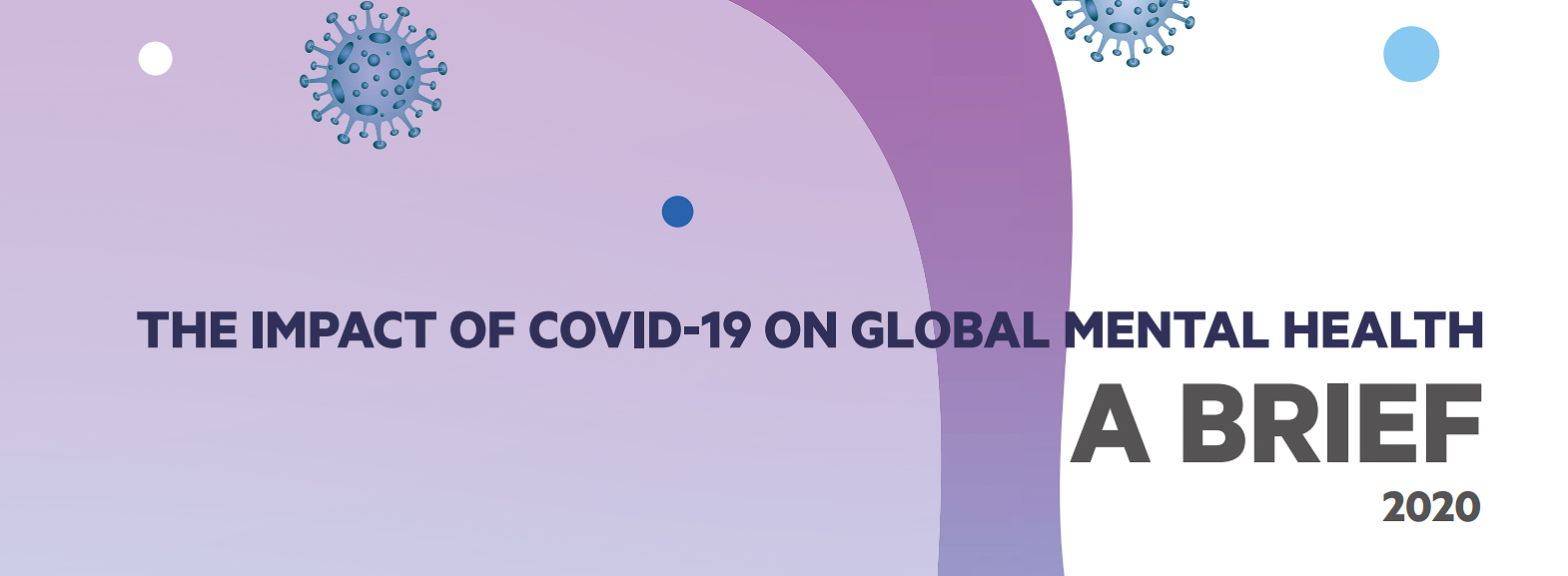
United for Global Mental Health – June 2020 This briefing provides an overview of some of the key issues regarding mental health and COVID-19.
It is based on the work of the World Health Organisation (WHO) and UN agencies, and the feedback and inputs of partner organisations through the weekly COVID-19 and mental health webinar series run by United for Global Mental Health and partners, and initiatives including the Open Letter from civil society calling for inclusion of mental health in all national government COVID-19 response and recovery plans.

Addressing mental health needs: an integral part in COVID-19 response
World Psychiatry, June 2020 – Tedros Adhanom Ghebreyesus.
This important editorial from the Director General of the World Health Organisation highlights the extent to which COVID-19 affects mental health as well as physical health. It also acknowledges that mental health systems in all countries need to be strengthened to deal with the impact of COVID-19.

Thwarted belongingness and perceived burdensomeness explain the associations of COVID‐19 social and economic consequences to suicide risk Wiley Online Library, June 2020 – Kim L. Gratz, Matthew T. Tull, Julia R. Richmond et al.
The social and economic consequences of COVID‐19 and related public health interventions aimed at slowing the spread of the virus have been proposed to increase suicide risk. However, no research has examined these relations. This study examined the relations of two COVID‐19 consequences (i.e., stay‐at‐home orders and job loss) to suicide risk through thwarted belongingness, perceived burdensomeness, and loneliness.

Has COVID-19 subverted global health? The Lancet, May 2020 – Richard Cash and Vikram Patel.
For the first time in the post-war history of epidemics, there is a reversal of which countries are most heavily affected by a disease pandemic. By early May, 2020, more than 90% of all reported deaths from coronavirus disease 2019 (COVID-19) have been in the world’s richest countries; if China, Brazil, and Iran are included in this group, then that number rises to 96%.

Public health messaging and harm reduction in the time of COVID-19
The Lancet Psychiatry, May 2020 – M Karamouzian, C Johnson, T Kerr.
Coronavirus disease 2019 (COVID-19) was declared a pandemic on March 11, and the disease is now expected to spread to most countries, if not all. The public health messaging mainly concerns personal hygiene, physical distancing, respiratory etiquette, stocking up on food supplies and essential medicines, contact tracing, and staying indoors as much as possible.
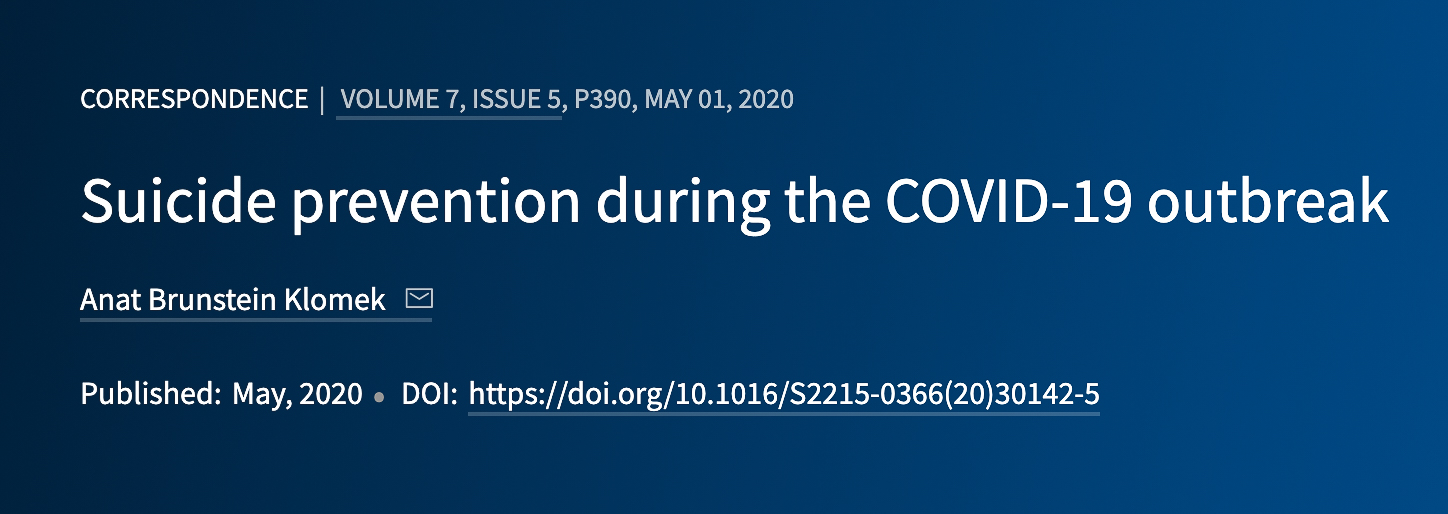
Suicide prevention during the COVID-19 outbreak The Lancet Psychiatry, May 2020 – Anat Brunstein Klomek.
Publications on mental health and psychosocial considerations during the COVID-19 outbreak and on the psychological effects of quarantine provide important information and recommendations.

Nursing homes or besieged castles: COVID-19 in northern Italy
The Lancet Psychiatry, May 2020 – Marco Trabucchi and Diego De Leo.
The tragic events in Italy, with more than 10 000 deaths due to novel coronavirus 2019 (COVID-19), are causing pain and demoralisation to a still incredulous and shocked general population. It is particularly distressing that outbreaks of infection have developed rapidly in many nursing homes, where staff have been completely neglected by health authorities and can offer only little protection to many frail and needy older people.
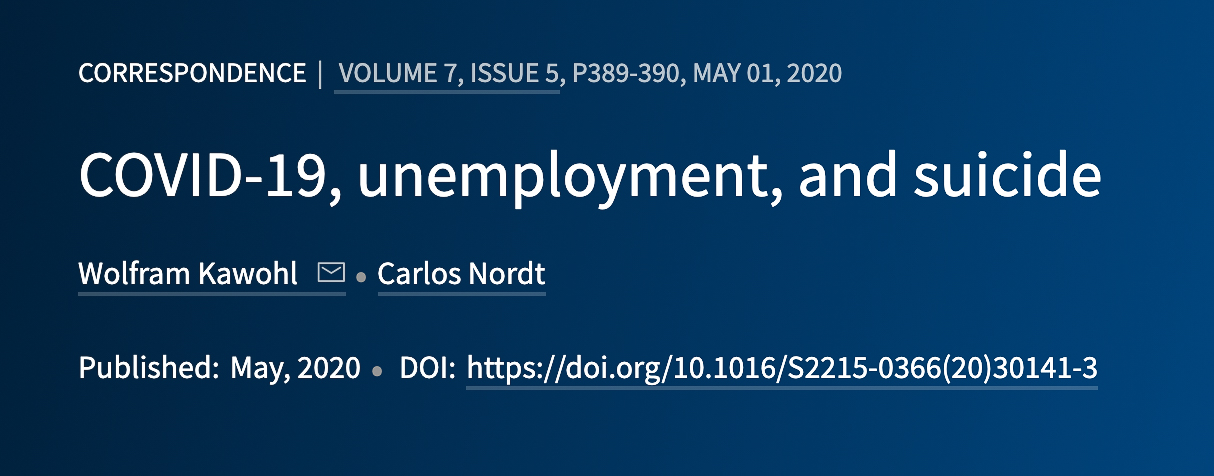
COVID-19, unemployment and suicide The Lancet Psychiatry, May 2020 – Wolfram Kawohl.
The COVID-19 pandemic has led to the introduction of strong restrictive measures that are having a substantial effect on the global economy, including an increase in the unemployment rate worldwide.

Are COVID-19 survivors at increased risk for suicide? Acta Neuropsychiatrica, May 2020 – Leo Sher.
Whether the coronavirus disease 2019 (COVID-19) pandemic influences suicide rates in older adults is not yet known. However, the pandemic is likely to result in a confluence of the risk factors for suicidal behaviors (Reger et al., 2020) informing approaches to prevention.

Key ethical questions for research during the COVID-19 pandemic
The Lancet Psychiatry, May 2020 –Ellen Townsend, Emma Nielsen, Rosie Allister and Sarah A Cassidy.
This paper reflects on ethical issues to consider when conducting research on self-harm, suicide, and the broader impacts of COVID-19 in the midst of a global pandemic, and provides some recommendations to consider when researching these topics.

Strategies to Promote Social Connections Among Older Adults During ‘Social Distancing’ Restrictions The American Journal of Geriatric Psychiatry, May 2020 – K. Van Orden, E. Bower, J. Lutz, C. Podgorski, E. J. Santos & Y. Conwell et al.
The study addresses how clinicians can help older patients maintain social health during social distancing restrictions for COVID-19. The authors present evidence-informed cognitive-behavioral strategies to promote social connectedness for older adults remaining in their homes due to social distancing restrictions.
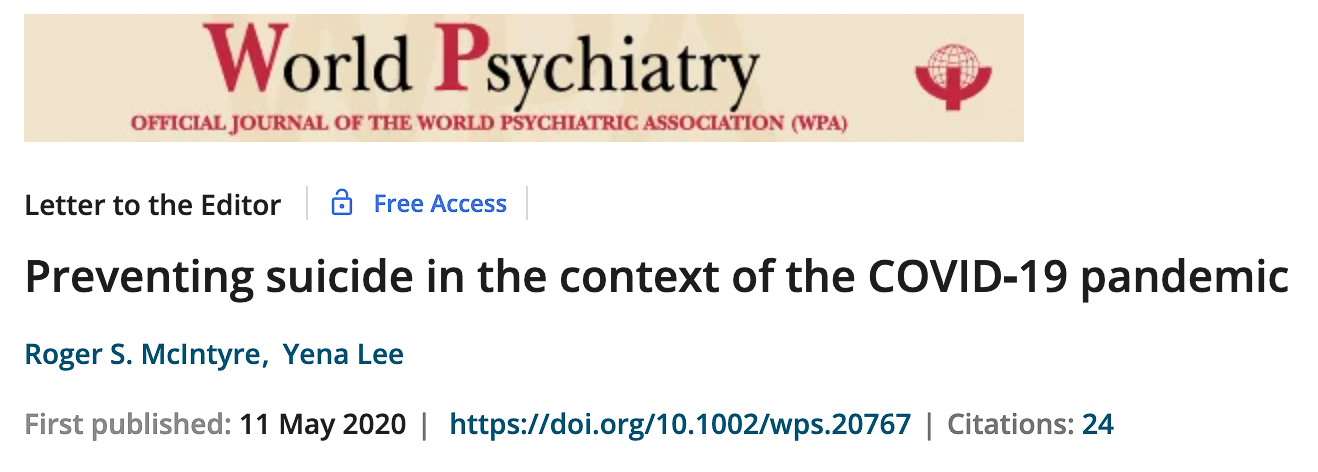
Preventing suicide in the context of the COVID‐19 pandemic World Psychiatry, May 2020 – Roger S. McIntyre and Yena Lee.
The impact of the COVID-19 pandemic on the labour market, as well as the government’s response to mitigate risk via social isolation and quarantine, has resulted in the greatest and most rapid change in the employment sector ever recorded in the US. Notwithstanding emergency government financial response, it is anticipated that a significant percentage of the labour market will contract.
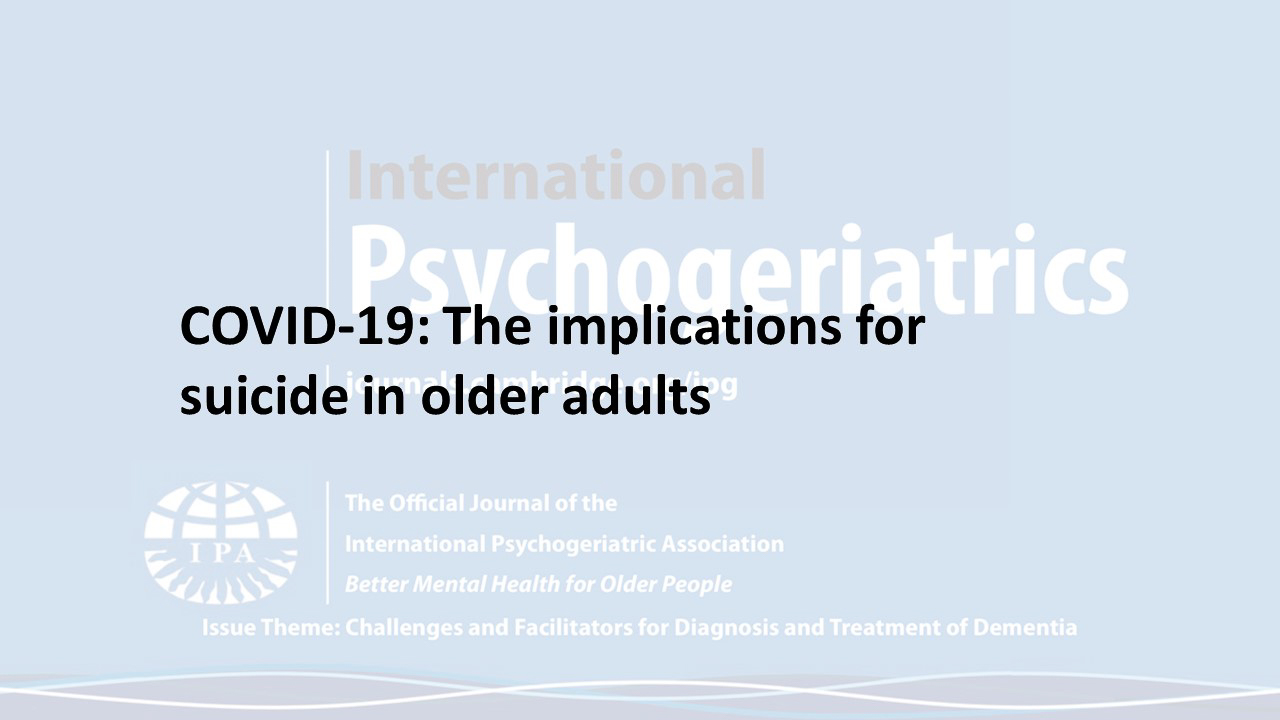
COVID-19: The implications for suicide in older adults
International Psychogeriatrics, April 2020 – A. P. France Wand, B-L. Zhong, H. F. Kum Chui, B. Draper & D. De Leo.
This important paper examines the links between suicide in older people and the COVID-19 pandemic, providing perspective from psychiatrists from four regions; China, Hong Kong, Italy & Australia.
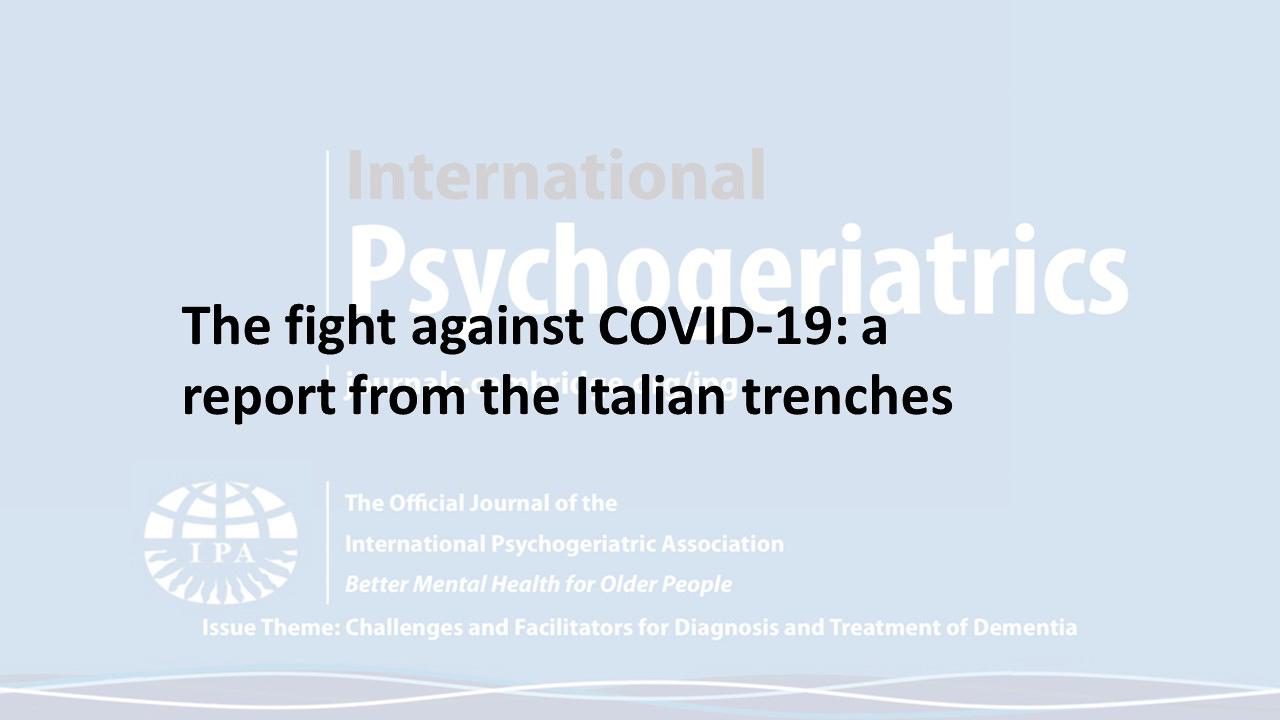
The fight against COVID-19: a report from the Italian Trenches
International Psychogeriatrics, April 2020 – Diego De Leo & Marco Trabucchi.
This commentary provides an important snapshot of the COVID-19 situation in northern Italy, particularly focusing on the reasons surrounding Italy’s disproportionately high number of deaths.
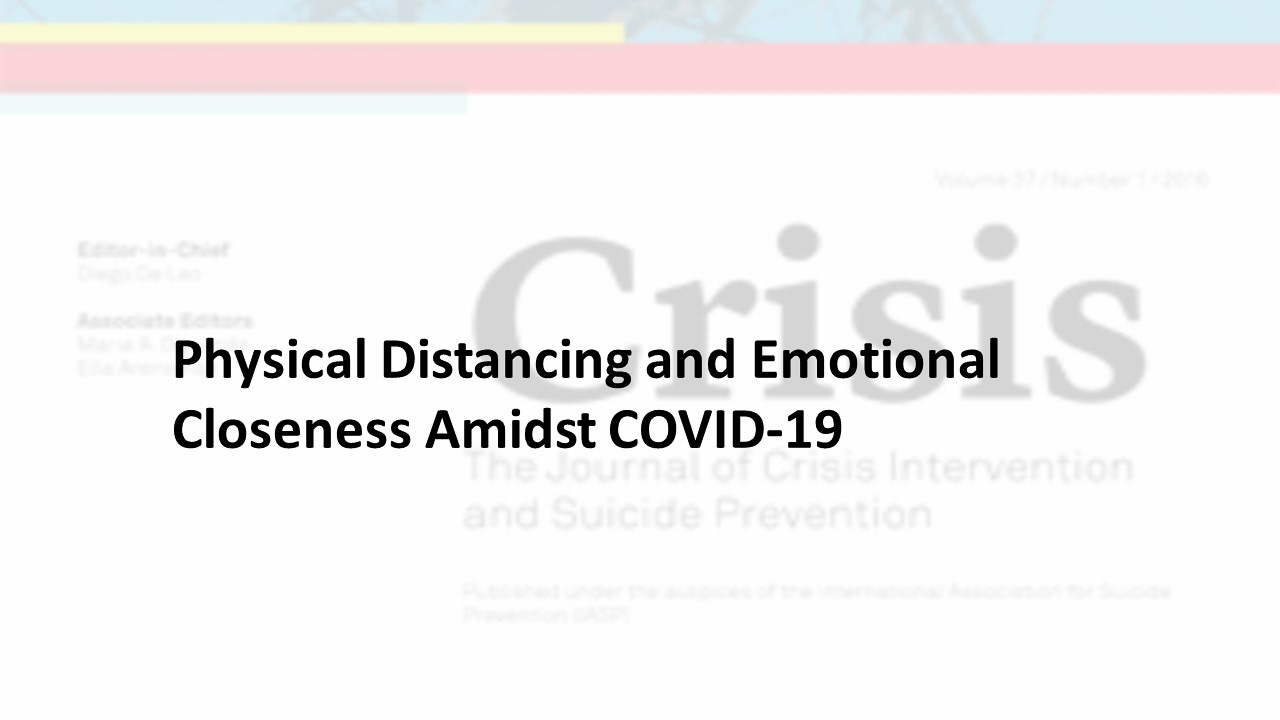
Physical Distancing and Emotional Closeness Amidst COVID-19
The Journal of Crisis Intervention & Suicide Prevention, April 2020 – Paul S.F. Yip and Pui Hing Chau.
The 2019 novel coronavirus disease (COVID-19) has spread rapidly in many countries and the fallout from the pandemic is still unfolding. This important editorial outlines some key considerations regarding social isolation.
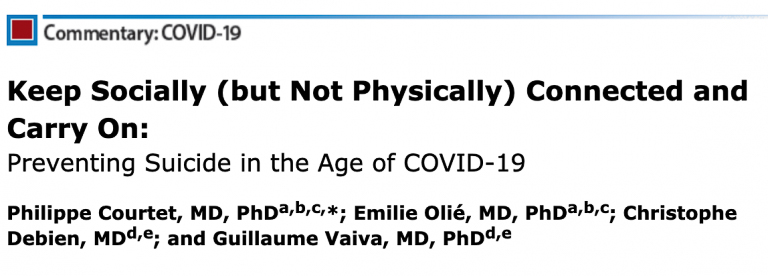
Keep Socially (but not physically) Connected and Carry On: Preventing Suicide in the Age of COVID-19
The Journal of Clinical Psychiatry, April 2020 – Philippe Courtet, Emilie Olié, Christophe Debien and Guillaume Vaiva.
While loneliness is already highly prevalent in the general population, it is feared that it will be more pronounced during the COVID-19 outbreak quarantine, leading to dramatic effects on the most vulnerable people, including psychiatric patients. Psychiatrists must be cautious about the negative psychological consequences of quarantine in both the short term and long term.

Suicide Risk and Prevention during the COVID-19 Pandemic The Lancet Psychiatry, April 2020 – D Gunnell, L Appleby, E Arensman, K Hawton, A John, N Kapur, M Khan, R C O’Connor J Pirkis, and the COVID-19 Suicide Prevention Research Collaboration.
Commentary on the longer term effects of the COVID-19 pandemic on suicide rates as the pandemic impacts the general population, the economy, and vulnerable groups. “Preventing suicide therefore needs urgent consideration. The response must capitalise on, but extend beyond, general mental health policies and practices.”


